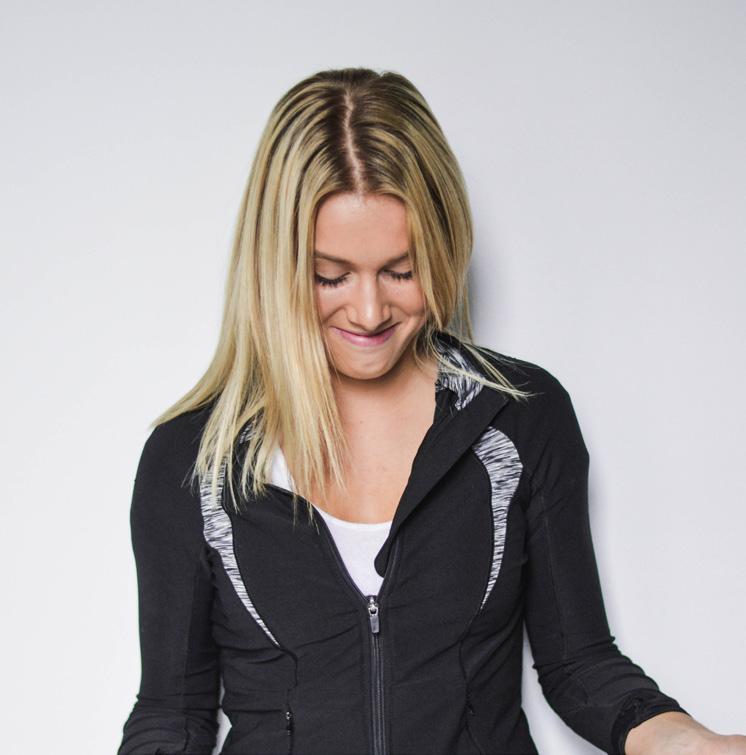










Mouth of The River November 21st 2014
Publication of Oyster River High School
M 01
Dear Readers,
As another school year is underway, so is another issue of Mouth of The River. As we are sure you already no ticed, we have made substantial changes to the publication. We have always felt that presentation is equally as important as content, so we wanted to evolve with the modern times to create a modern product. As we continue to strive to give the best quality of content, we want our appearance to uphold the same level of excellence. Of course, with higher quality comes higher cost, so we will only be printing 500 copies compared to the 1,000 newspapers in the past. We hope that the maga zine will be held at a higher value, and we encourage all read ers to share their copy. We have decided to make Mouth of the River a quarterly publication.
With less staff members and two Editors in chief, we hope that this year’s Mouth of The River is reflective of the close dynamics of our staff. The combination of a smaller staff, two

Editors in Chief, and a quarterly release creates a publication with more refined and curated quality content. What we are unable to fit in each print release will be view able on our website, which we hope to maintain as an equal facet of Mouth of The River. Our readers will also be able to keep up with our stories on social media.
In addition to our ever prevalent online presence, we aim to work with ORTV this year on various stories, which we hope will align two separate Oyster River media outlets, and deliv er relevant stories to our community in both mediums.

As your read issue 1, we hope you find the content inter esting, compelling, and presented more cleanly than ever. As always, feel free to write us a letter or give us feedback. Enjoy.
Sadie Moore and Sam Colby
MOR Mission Statement


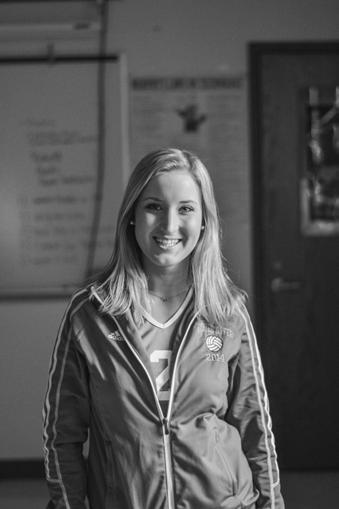
Mouth of the River seeks to reliably inform the student body, as well as the surrounding community, of interesting and newsworthy content in a mod ern, compelling format. Our goal as a staff is to give a voice to the students of Oyster River, and have it heard by any and all of our readers.
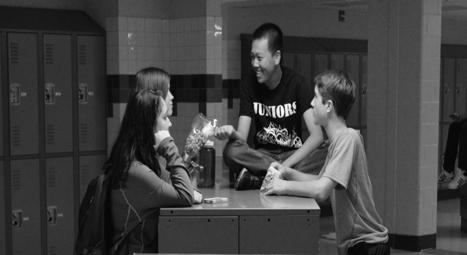
Your Butt to School and
it...3
New Direction for Durham...5
NEWS FEATURES OP~ED SPORTS/CLUBS WHAT’S IN THIS ISSUE
The Staff...10
Ludo...11
on Writing a Collge Essay...12
to Know
Mil
Return of Vinyl...16
LETTER FROM THE EDITORS
Get
Park
A
Stressed Out...7 Fast Casual Mexican Food...9
Meet
Ciao
Tips
Getting
Mr.
liken...14 The
Get a Head Start...18 Territory War...20 Peers as Resources...21 Making a Difference...22 Superfandom...25 Mike The Trainer: Your Best Friend...27 Stadium Bound...28 A Balancing Act...29 Spirit Day...31
02
Find us at Twitter: @MORnewspaper Email: mornewspaper@gmail.com Website: mornewspaper.com
Get Your Butt to School and Park It Attendance and Parking Policies
Before the school year starts the administra tion and school board are hard at work determining the policies for students in the upcoming year. What people seem to talk about the most is the ever chang ing atten dance policy.
In the 20122013 school year there was no atten dance policy, meaning you could miss as many days as you wanted without ad ministrative consequences (unless in the case of a cut).
In this time students were missing up wards of 80 days. Senior at the time, Katie Sylvia says “I was so tired of school so with no policy it was really easy at the time to just not go.” She does admit that this made it really difficult to keep up with all the work in her classes and that she “end ed up having to take gym online,” which consisted of her recording her hours of physical activity so she wouldn’t fail gym class.
In the 2013-2014 school year

they tried to fix this issue by making it so you could only have 5 unexcused absences and absences were only ex cused if you had a note from a doctor or a court date. At the end of the quarter if you had more than five unex
this by writing a letter to the appeals board. “Even though my mom called me out I was administratively failing all my classes just because I choose not to go to the doctors every time I was sick,” explains senior
cused absences in any class then you “administratively failed.” Students who had good grades in their class es and then ended up ad ministratively failing were not very happy with this.
“Why does it matter when I am and am not there, I did all my work and got an A, it’s not my fault if I’m sick,” says junior Nina Messer.
Students with administra tive failures could appeal
Olivia Svanholm. Svanholm got multiple administrative failures that she successful ly appealed but explained the process as “a waste of time because if they just accept all the appeals then what’s the point in having the policy?”
Again trying to cater to the needs of students while maintaining an educational environment, the admin istration and school board
changed the policy so that you could only have three unexcused absences but if a parent you out and writes a not then it’s excused. Office secretary Lisa Richardson says “this makes it much easier for students and par ents because they don’t have to get a doctor’s note if they don’t necessarily go to the doctor.” The student handbook states that in order for the absence to be unexcused, the school must receive a phone call be fore 8:30am on the day of the absence from a parent or guardian and then a follow up note explaining the rea son for the absence within three days of the student re turning to school. “All these chang es in the attendance policy are just a waste and confuse people. We should know how to be responsible and come to school and get our work done by this point,” says senior Gunner Tucker.
If you are more than 10 minutes tardy to a class without a note it is an unex cused absence. If you have a pattern of being tardy then the teacher can bring it to the administration who will
03 Department NEWS
decide the disciplinary ac tion which could consist of having your open campus revoked if you have it. If you cut a class, you can’t make up the work for that day, consequently hurting your grade, and it is an unex cused absence. The teacher can also write you a cut slip which will lead to detention. Multiple cuts will result in your parking pass being lost.
The student handbook also states that “to participate in co-curricular activities, stu dents must be present for

the entire school day or on an approved field trip.” This has been an issue for some students because even if the absence is excused they still can’t play in their game that day for example. “It’s like I can’t miss a second of school during volleyball season because it all has a domino effect; if I miss any school, I can’t practice, if I can’t prac tice, I can’t play in the game the next day. I am so busy during volleyball that I al ways get sick but I can’t miss any school to get better,” says junior Sam Walker.
Another policy that has changed is the penalties for parking where you shouldn’t. “From what I have heard, last year too many students were parking in visitor or faculty spots,” says assistant principal Mark Milliken, who is in charge of enforcing the parking policy. There were yellow paw prints painted onto all the spots that students could park in and they can park on Coe Drive. First offense of parking where you shouldn’t or not having a pass is a verbal warning. The sec ond offense results in loss of open campus for a week and possible loss of parking for a week. Once you get to the third offense there is an ex tended loss of open cam pus and parking and you could be towed. There is a place in PowerSchool for these strikes to go so they are documented for you and your parents to see. “We have had very few problems so far and only a few students have had more than one warn ing,” Milliken says. He explains that the main reason they made this
stricter policy is that it was a waste of the administrator’s time to have to constantly be chasing down students who parked in the wrong spot. Some teachers have started bringing parking cones out with them if they leave for their prep period to ensure that nobody takes their spot. Another change is that they only issued as many passes as they had spots, opposed to last year when they gave out passes to anyone who bought one. No sophomores were allowed passes and there are still juniors on the waiting list for a pass. “Last year there were never enough spots which is why I would park in visitor but that hasn’t been an issue this year,” explains senior Hunt er Ransfos.

“We have had very few problems [with parking] so far and only a few students have had more than one warning.”
-Mark Milliken
Sadie Moore News Writer
“All these changes in the attendance policy are just a waste and confuse people. We should know how to be responsible and come to school and get our work done by this point.”
04 NEWS
-Gunner Tucker
A New Direction for Durham Changes to Downtown’s Traffic Patturn
The town of Durham seemed to collec tively groaned as construc tion began on the Univer sity of New Hampshire campus in early June this past summer. Main Street began undergoing quite a few changes such as adding a bike lane, 12 new angled parking spots, and down sizing from two lanes to one at the top of the road. The thought behind these changes was to add park ing for residents in the business district of UNH as well as slow down vehicle traffic in the area that has the most foot traffic on the campus. “We have tried to be incredibly responsive to the feedback received from town residents regarding the traffic in Durham,” said town administrator Todd Selig.
The University of New Hampshire currently has their largest freshman class since 2006; 3,461 freshmen began classes on September 2nd, an increase of 13.5% from the freshman class of ‘06 (3,079 students). Due to these large numbers, pe destrian traffic has doubled in the fall of 2014 since the fall of 2013, according to a study done by the town ad ministrator’s office prior to the planning of the project, which was later named “Pi lot Program.” The plan for the construction was exten sively researched by con tacting other towns which have implemented similar
traffic patterns, such as Cambridge, Massachusetts. The town administrators in Cambridge conducted a study on New Hampshire Ave, a busy city street with heavy car, foot, and bicycle traffic, having to do with the possible addition of a bike lane. When their re

changes, just in time for the students to flood back into the town. What happened next was was an unforeseen conundrum. “We expected traffic to change when we implemented these chang es. We switched the yield signs on Pettee Brook and Main Street, and with the street going down to one lane the traffic was some times backed up all the way to the field house,” said Se lig.
sults showed nothing but positive effects, they imple mented the bike lane per manently.
Based on the results ob served in Cambridge, the board in Durham decided to go ahead with the Pilot Program. Over the course of the summer, Main Street made the above mentioned
The UNH students have also felt the impact of the new pattern on Main Street. “I live right on Main Street, and I’ve noticed the traffic constantly built up from 9 to 3 every single day,” said UNH freshman Allie Clark.
The traffic became so se vere that residents in town began seeking alternate routes to their destinations
05 NEWS
“We have tried to be incredibly responsive to the feedback received from town residents regarding the traffic in Durham,”-Todd Selig
in order to avoid downtown Durham. Jesse Morrell, a professor of nutrition at UNH and a mother of two children in the Oyster Riv er School District, has been especially concerned about the amount of traffic that is suddenly going through the back roads in Durham. “Anyone who knows down town Durham will avoid it at all costs now,” said Mor rell. “Cars that avoid down town are going through the faculty neighborhood now, often speeding and endan gering the families that live there.”
Aside from the unpre dicted traffic back up, there have been numerous issues with cyclists in town. Stu dents and residents riding bikes on Main Street were recorded by the town of fice reaching the bottom of the hill (near Aroma Joe’s coffee) going around 35-40 mph, which is 10-20 mph over the speed limit. The high speeds and heavy foot traffic combined to make a dangerous area. “I drive down Main Street every day on my way to school, and there are always col lege kids on bikes swerving in and out of traffic, going crazy fast. It definitely can’t be safe,” said Oyster River student, Ella Cedarholm.
“We hoped that by de creasing Main Street to one lane and by adding a bike lane and adding parallel parking along the sides of the road, cars and bikes would begin going slower. Within a few days of the newly implemented traffic
pattern, the average speed of cars on Main Street de creased by 5-7 mph,” re ported Selig. Unfortunate ly, the new pattern was not fully successful.
The accident that led to the death of John Kavana ugh, a 58 year old cyclist in durham, on August 17th caused somewhat of an up roar against the new traffic pattern and bike lane. “This tragic fatality was a large contributor to the reasoning for changing Main Street back to two lanes,” said Selig. Kavanaugh was rid ing his bicycle down Main Street in the bike lane when a man parked in a parallel parking spot opened his door suddenly, causing Ka vanaugh to collide with the door and sustain significant head injuries.
A standard bike lane should include a two foot
“door zone” between the bike lane and the parked cars, as well as a five foot wide “riding zone,” accord ing to the research done by the town of Durham.
means that bikes and cars will be sharing the right lane completely. A new take on “share the road.”
“I’m all for a bike friendly community. I teach fitness
Because of the limited real estate options, they were unable to make the bike lane the necessary width. Due to the accident that oc curred, the substantial traf fic, and the general disdain for the new pattern, the town of Durham started construction on the street to turn it back to two lanes in mid-September.
In order to keep down town Durham a bike friend ly area, the right hand lane became what is known as a “sharrow lane,” which
and promote well being to my students, I would love if Durham would become a place where people felt safe enough to bike every where,” Morrell said.


Stephanie Clark, a Durham resident who at tends Berwick Academy, is a frequent visitor to down town Durham. “Since the accident where that biker died, I’ve been pretty ner vous in Durham. Wheth er I’m driving through or parked, I’m so scared that a pedestrian or biker will just jump out in front of me! The road was too narrow as one lane, and the parking spots are very difficult to ma noeuvre in and out of. I just don’t want to get in an ac cident, and now I’m afraid I will even if I’m being cau tious,” said Clark.
Zephyr Jaeger News Writer
“Anyone who knows downtown Durham will avoid it at all costs now,” -Jesse Morrell
06 NEWS
Stressed Out?
Lynn Lyons talks about Anxiety
Lynn Lyons, psychothera pist, visited ORHS on Tues day, September 30th to give a presentation called Anx ious Kids, Anxious Parents. Over 150 parents, teachers, and community members attended. Jess Whalen and the PTA organized the event. Whalen had heard of Lyons, read her books and thought it would be helpful to other parents in the com munity. “I definitely think it was helpful, she had tools for both parents and edu cators,” says high school counselor and attendee Kim Sekera.
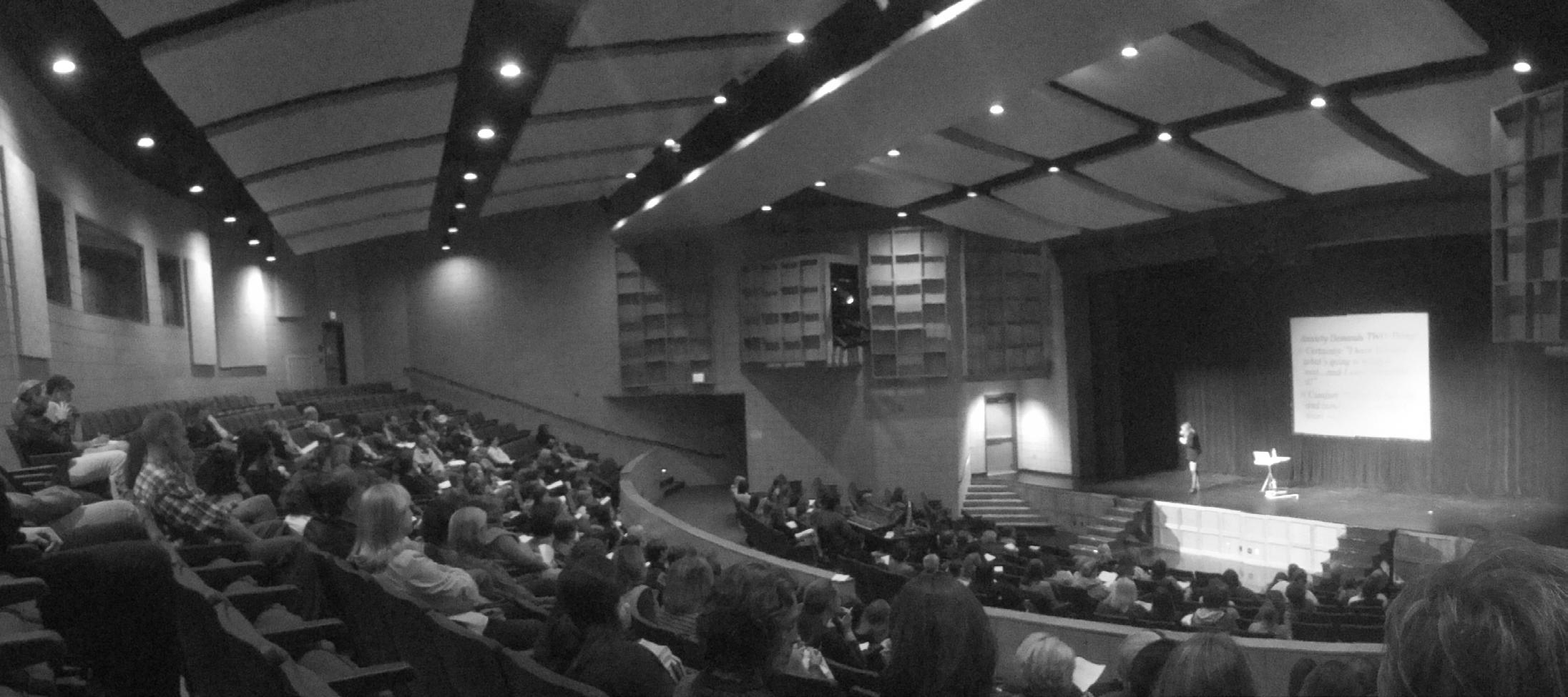
Lyons starts her presen tation with some statistics about anxiety, letting us know that it is the number one mental health problem
in the USA, and that one in five kids have diagnosed anxiety disorder. There are different types of anxiety disorders including: sep aration anxiety, specific phobia, generalized anxi ety disorder, OCD, social phobia, panic disorder, and PTSD. It is very common for anxiety disorders to lead to depression, “being anx ious your whole life and not being able to do anything about it is depressing,” Ly ons explains. “A lot of stu dents are dealing with a lot of stress and have very few tools for how to process it. The stress leads to anxiety because they don’t have a healthy way to overcome it,” says high school teacher Brian Zottoli
Only about one third of those suffering from an anxiety disorder get treatment, according to the Anxiety and Depres sion Association of Amer ica. There are many forms of treatment, the most com mon being medications like Xanax, Klonopin, Vali um, and Ativan. “Very few people have actual anxi ety disorders as opposed to anxiety which is when medication wouldn’t help,” Zottoli says. Lyons explains that she would rather fix the problem then cover it with medications. She also ex plains how placeboes work just as well because these disorders are very much mental games.
She believes in therapy
sessions where you focus on the disorder instead of the content. Her example was a child who is anxious about riding in the car be cause they are afraid they will run out of water in their water bottle and be thirsty. Instead of fixing the content by making sure there was extra water, they would do just the opposite and have him face his fear and run out of water. This would work on his deeper anxiety instead of just the content. Lyons describes handling the content as “playing whack-a-mole” because even if you fix one thing they will keep com ing up with new content issues due to their deeply rooted anxiety issues.
07 NEWS
“The main reasons par ents come to a professional for help is when the anxiety starts effecting academics and sleep,” Lyons says. She explains that at night when a kid is lying there with just their thoughts is when they will think the worst and not be able to sleep. She has had many cases where this ef fects the entire household’s ability to sleep due to the one child not being able to. The stress of school work and anxiety of not being able to get it done can lead to a student just not doing anything or severe anxiety attacks so this is anoth er time parents come for ward. “It came to the point where we were just fighting constantly because Jack* refused to do his work, I thought he was being a re
bellious teenager when in reality, all the work he had was just too much for him,” says the parent of an anon ymous teen with diagnosed anxiety disorder.
“When parents see the world as a dangerous
if the parent has it but how they are raised can increase it. Parents constantly cod
up when asked to read aloud and stuff like that. It was sixth grade when my
place, their kids will too,” Lyons explains. Anxiety is genetically passed down but environment plays a role as well. It is nature and nurture, not only will it in crease the child’s chances
dling and warning their child will make the child more fearful. Something Lyons does that helps is has cognitive therapy with the anxious child and the anxious parent. Only 39% of children have improve ments with their anxiety af ter therapy if they have an anxious parent who doesn’t attend. This is compared to a range of 78%-82% success rate of therapy with chil dren who either don’t have an anxious parent or the anxious parent attends.
Jill*, a high school student talks about her experience with anxiety “I always had these weird feelings when I had to do something new, I would start biting my nails and my stomach would

parents started bringing me to therapy, which ironical ly made me very anxious. My parents would leave me in the room with this stranger and she would ask my questions that seemed really random. Eventually my mom started coming in with me and the therapist would ask us both ques tions. My mom would talk about how she did some of the things I do when she was little. The therapy real ly helped and even though I don’t go anymore my mom and I still do some of the exercises that we learned when we get anxious.”
*Names have been changed to protect student’s identity.
be in knots. I was terrified whenever my parents left me somewhere, thinking they might not come back for me, or they could get hurt. As I got older it just got worse; I would freeze
 Moore News Writer
Moore News Writer
“A lot of students are dealing with a lot of stress and have very few tools for how to process it. The stress leads to anxiety because they don’t have a healthy way to overcome it.”
-Brian Zottoli
“Being anxious your whole life and not being able to do anything about it is depressing.”
-Lynn Lyons
08 NEWS
Sadie
Fast Casual Mexican Food
Comes to Durham
thing is prepared daily, it’s heavily reliant on the prep crew,” explained Harmer. “We’re just looking to be consistent with what we do and put out fresh products,” he added.
“Of course when you’re a big company, you have the advantage of the cash flow, they can have good man agement and they can have more staff if they have more money,” Eja explained.
Department
Many questions and rumors flew around while the space next to Durham House of Pizza was being renovat ed. These questions were quickly put to rest once a sign reading “Tacomano” was placed out front. Af ter six months of construc tion, Tacomano held it’s grand opening on October 8th, 2014. Three restau rants have come and gone in that space over the past five years. The competition in Durham is apparent, and many people are interested to see what Tacomano will bring to the table.
Like the majority of restau rants in Durham, Tacoma no is fast-casual. However, they have something else that sets them apart from the rest of Durham Busi nesses. Tacomano is owned
by the Margaritas restau rant chain, who opened Ta comano as an experimental “second concept” type of restaurant. Dan Harmer, long time employee of Mar garitas now manages Ta comano in Durham. “They [the president and owners] have been putting a lot of effort into it for the past 6 months,” explained Harm er. “I worked for Margari tas for the past 7 years, I’ve learned a lot about the com pany,” explains Harmer. Harmer hinted at the idea of opening other locations similar to this one. Since Durham is the first location to test out their new style of restaurant, Tacomano will set the bar and determine how successful the idea is.
Tacomano plans to use consistency and quality to stay in business. “Every
The building which Taco mano is part of, is owned by the Petrovitsis Family who also owns and manag es Durham House of Pizza, the restaurant next door to Tacomano. Jordan Petro vitsis, Senior at ORHS, has watched numerous restau rants come and go in that space, but claims that Ta comano might be the best of them yet. “Tacomano is going to do well, they have experience, they seem more passionate about it,” said Petrovitsis. The line was out the door on Tacomano’s opening day.


Paul Eja, Owner of Pauly’s Pockets, located across the street from Tacomano, be lieves the new restaurant is here to stay. “I think they’re going to be successful, said Eja. In his 18th year of own ing a successful small busi ness in Durham, Eja knows the market well. “To be suc cessful in Durham, or any where else, you have to have the idea, you want to be dif ferent from everybody,” ex plained Eja. “You have to be fast, healthy and conscious, people are always look ing for healthy food and a good product,” Eja added.
Nicole Beaudet, Junior at UNH, said she thinks Ta comano could be success ful. “The location has seen quite a bit of turnover in business in the past year but I believe that there is a lot of potential for Tacoma no,” said Beaudet. What’s more, is that Tacomano will satisfy the largest part of Durham’s demographic: college students. “Mexican food is extremely popular with college students; there will be no lack of customers willing to pay money for burritos, it will be interest ing to see how the business does” said Beaudet.
Tacomano may fill a void in the market. The consen sus is rather consistent from management to customers: Tacomano is here to stay.
Colby Guest News Writer
09 NEWS
Sam
FEATURESDepartment
Meet the New MOR Staff

FEATURES: Isabelle Todd is a junior and writes for the Features Department of Mouth of the River and is also the co media manager. Most of her time is spent playing sports, soccer in the fall, indoor track in the winter and outdoor track in the spring. When not at practice she likes to ski in the winter and either run or sail in the summer. Isabelle became interested in journalism because it is a way of keeping “up to date and educat ed and allowing others to do the same.”. She hopes to continue on with journalism into college.
Abby Colby is the Features Editor, and a junior here at ORHS. Her hob bies include skiing, reading, and cycling. She is also involved with New Hampshire Youth for Peace and Justice and Sustainability Club. Colby loves being outdoors, hiking especially.“My favorite part of jour nalism is just staying up to date about what’s going on in the world. Journalism is the reason I know about what’s going on in the world politically, environmentally, and socially, and that’s really important, especially with NHYPJ and Sustainability Club. Writing for MOR also gives me the opportunity to use my voice and creativity to write about what interests me and what’s relevant to students,” says Colby. She is not sure if she wants to pursue being a journalist, but with her leadership qualities and articulate mind she would make a great one.
OP-ED: Forrest Spinney is a junior Co-Media Manager, and specializes in opinion-editorial writing. Forrest enjoys spend ing his free time taking long walks on the beach, indulging in candle lit bubble baths, and collecting stamps. When not detoxing with such relaxing activities, Forrest caddies at Cochecho Country Club, and interns at the Portsmouth Yacht Club. His favorite part of journalism is “Stepping away from the generic article- being able to reflect my individualized style in my writing, and presenting it to the community.” Forrest aspires to one day embody both the physical and charismatic traits of Shawn Kelly.
Sam Colby (or as many of you know him Scolby) is a senior here at ORHS. He is the Co-Editor in chief of Mouth of the River and writes in Op-Ed department. When its not winter and hes not skiing, you can find Sam either serving falafels at Pauley’s Pocket in Durham or taking photos with whatever camera he has with him. Sam is graduating a semester early and is heading out west where he plans to spend a lot of time skiing. He enjoys journalism because “it can take you cool places and allow people to hear your voice.”. Mouth of the River is his favorite part of Oyster River. Madi is a junior here at ORHS and writes in the Op-Ed department. Some of Madi’s hobbies include sleeping and grooming cats, but she is also very involved in the school Sustainability Club. Madi puts her friendly personality to good use by working at Live and Learn Childcare.. Her favorite part of journalism would be “exploring and expressing topics that are important to me and are meaningful to the world.”. She’s not sure if journalism will be in her future but she is sure that Mr. Kelly has impeccable style.
SPORTS: Kirsten will be graduating at the end of this year from ORHS, she is the editor of the Sports Department. Not only is Kirsten a great sports writer but also an amazing goalie for the girls soccer team. Kirsten’s hobbies include reading, drawing, playing sports, longboarding, snowboarding, surfing and hiking in her free time. She likes jour nalism because “I am contributing to informing my peers and the community on important and sometimes goofy stories.” Kirsten hopes to attend Boston University for forensic science next fall. Haley Parry or HP is a senior at Oyster River. Haley writes in the Sports Department. Haley plays volleyball here at Oyster River and enjoys skiing and sailing in her free time. Every summer Haley does an outdoors trip. Last summer she hiked the Appalachian trail for a month and the year before that she biked around Nova Scotia for a month. Haley loves the outdoors, and Mexican food. Her favorite part of journalism is “meeting new people, and being apart of things I normally wouldn’t even know about.”.
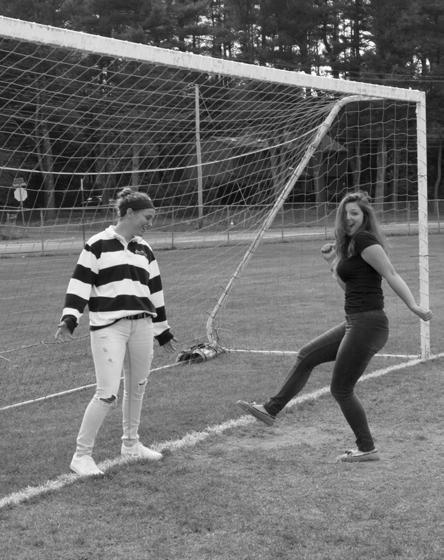
NEWS: Sadie or Smoore is the Co-Editor of Mouth of the River and will be graduating this year.
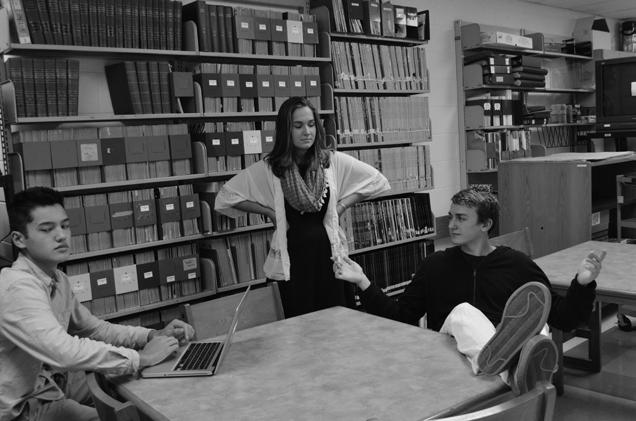
10
Sadie writes in the news department of MOR. In Sadie’s free time she enjoys “24 chilling”, and playing volleyball which she is the captain of this year, when not doing these activities Sadie is working at Serendipity in Portsmouth, or eating cheez itz. Smoore is a dedicated Bruins fan as well. She hopes to go into broadcast journalism because “informing the public on important matters and having things that I care about being heard.”
Zephyr Jaeger is a senior and the Editor of the News Department. She is an avid sailor and enjoys hanging out with friends which mostly includes watching Netflix and laying low with them.“I love journalism because its such a good way to put your own voice out there. Working together to put a news outlet that’s actually fun and interesting is such a cool thing to do in high school. Journalism is so important to our community and everyone elses and I love being a part of it, and keeping people informed.” Zephyr plans to attend either George Washington or Northeastern with a journal ism major, in hopes to one day have a career at a newspaper or magazine.
Jake Garner is a junior here at ORHS. He writes in the News De partment. His favorite part of journalism would be hanging out with Mr. Kelly and “informing the student body on news in the community”. Jakes loves the out doors especially when skiing, exploring, and taking long walks at adams point. Jake enjoys hang ing out with friends, and of course he loves to laugh. His goofiness is contagious. According to Garner Mr. Kelly is the “coolest teacher on planet swag.”. As far as his future in journalism he just says that he “can’t predict the future.”
Ciao Ludo!
Isabelle Todd Features Writer

Oyster River’s Italian Exchange Student
A lot of you may have heard that Italian ac cent coming from the se nior core. That is our new exchange student Ludovico Agostini, but we call him Ludo. He’s an outgoing and friendly student from Treviso Italy. Coming from Europe to our little town

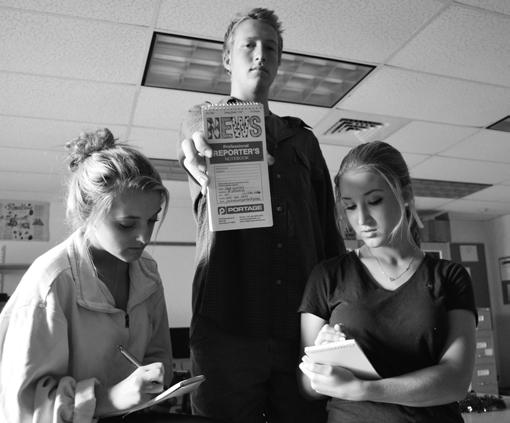
in New Hampshire can be a huge change. Being a new kid is hard enough, especially in our tight knit community. Coming from a different culture and not understanding our very different social queues, and the English language, along with fo cusing on a heavy school load and extracurricular can be very overwhelm ing, but so far, Agostini is thriving.
“I am really trying to submerse myself in your culture, while also taking advantage of the school’s challenging and fun class es,” says Agostini. He’s taking AP chemistry, AP bi ology, anatomy, and pre-cal culus, mythology, and U.S
history. “I am interested in everything academically, but here in the U.S I decid ed to focus on science,” said Agostini.
“Ludo is very interested in what’s going on and is 100% involved all the time. He’s fitting in well, and I hav en’t noticed any issues with him that has to do with him being from another coun ty,” says his AP chemistry teacher Mr. Lawrence. Agostini is a little quiet yet very outgoing and willing to make friends. He is slow ly but surely coming out of his shell and will most defi nitely become a huge part of the senior class.
Ludo is a man of many talents as well. He is in the Oyster River Jazz band,
and can play the trumpet and sing as well. He is a soccer player and track & field athlete too, which he has been doing for 6 years now. Agostini is also a Boy Scout “even if it is not fash ionable,” he says.
Many of the kids at Ludo’s school in Italy have done international exchanges be fore. Agostini was encour aged by his friends back home to do an exchange trip “I chose to come here be cause there are a lot of mis interpretations of America, and I wanted to see what life was like from an Amer ican’s point of view,” says Agostini.
Agostini is staying with
11 FEATURES
Ludovico Agostini
Sam Warach who graduat ed from Oyster River in the class of 2013. Warach is now attending The University of New Hampshire “Ludo is a smart kid and it is a pleasure to have him around,” said
Warach. Sean Lutz, a senior has got ten to know Ludo very well, and was twins with him on Twin Day during spirit week. “We met the first day of biology. The rest was love, fate, and my hope that he will one day teach me how to cook really, really good pasta” Lutz con
tinues to say “Ludo is fitting in extremely well. He speaks really good English, is really friendly and everyone seems to like him” Ludo is extreme ly involved at our school, but unfortunately was not able
Haley Parry Guest Features Writer

Mr. Bobcat Questions
MOR: Describe your dream girl?
Ludo: Tall but not too tall, and fit as a fiddle
to perform in Mr. Bobcat. He did not want to be up on the stage not knowing what was going on. So we thought we would have him answer the same questions that the con testants had to answer.
M: What would be your ideal date?
L: Depends on the girl and whatever she wants to do. I heard going to Portsmouth is a classic thing to do
M: If you had a superpower, what would it be?
L: Fire power to burn ev erything down, or water to knock stuff down.
M: If you were an animal what would you be?
L: A seagull because they can just hang by the beach all day
Tips on Writing A College Essay
It’s 10 pm. You’re staring at a blank document on your computer. The lit tle black line where you’re supposed to type blinks non-stop like a taunting re minder that you have to put something down on this paper. We’ve all been here at one point or another. Es say deadlines bring out the worst in almost all of us: chugging coffee, desperate ly looking for ideas online, sparknoting chapters from books that you should have finished weeks ago...but one thing that is different for
one certain essay during your high school career is that it can make or break your entire future. The college essay is our great est fear as seniors in high school, and our golden tick et into the colleges of our dreams.
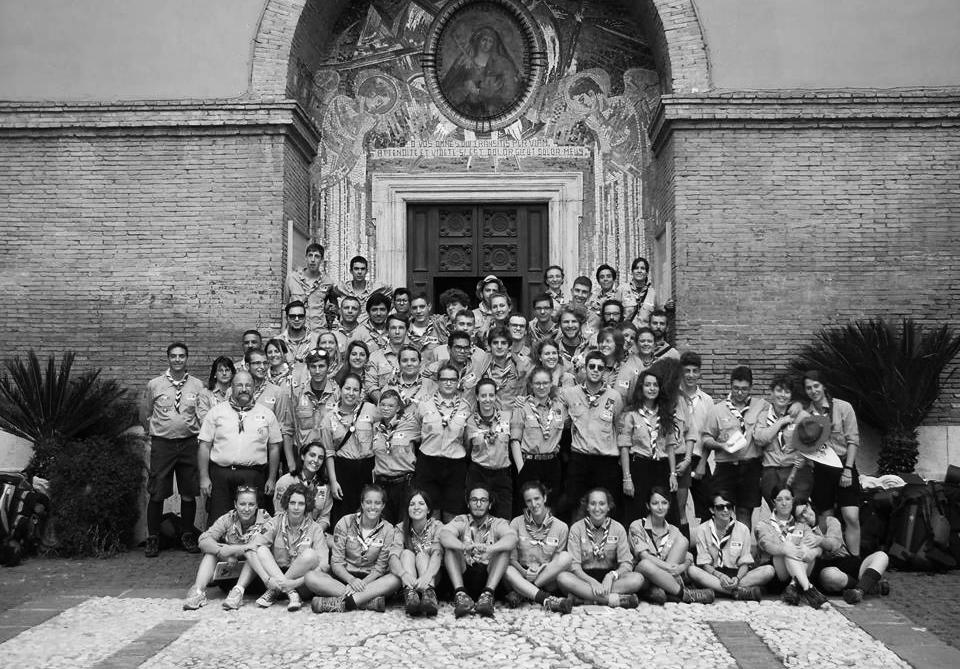
As the early action and early decision deadline ap proaches, I, like many of my peers, am struggling to come up with a creative personal narrative that will make me stand out among the thousands of other ap plicants. Fortunately, I was
lucky enough to attend a college essay workshop on Monday, October 6th as part of my advanced writ ing class with Anna Young, a Wellesley College admis sions officer, and I picked up quite a few tips on craft ing my own college essay. Hopefully this article will help you when writing your own essays.
“It was really nice to lis ten to what she had to say and make sure my essay was in line with her ad vice,” said Annika Barth, a senior at Oyster River who attended the college essay workshop. Something that Young stressed during her presentation was that ev erything you have done up to this point, all of your transcripts, your extra-cur
riculars, your SAT scores, is unchangeable. You have no control over what has passed, so you should focus all of your efforts on right now, and what you can do now is write the best possi ble college essay.
When choosing an essay question, rather than pick ing one and then trying to make your story fit with it, you should think of the story or message that you wish to relay to the reader and then pick the question that lines up the closest with the topic. You should try to learn about yourself when you write this essay, and then convey what you have learned to the admis sions officer. Once you have picked a question, you have to try your best to stick to it.
“When a student is willing to reveal herself to all of these strangers, I am truly touched,”-Anna Young
12 FEATURES
An admissions officer will be looking to see that you fully answered the question and generally stayed on topic throughout your piece. The readers of these essays are far less concerned with spell ing and grammar (though those things are still of great importance) than they are with the content of the story. They want to find stu dents who take risks with their writing, not necessarily students who pretend to be some kind of hero and write an essay brag ging about their her oism. “We can sense sincerity and honesty in an essay, and we can sense when it isn’t there at all,” said Young during the pre sentation. “When a student is willing to reveal herself to all of these strangers, I am truly touched,” she added.
As you begin to outline your essay (yes, you should outline), Brian Zottoli, a so cial studies teacher at Oys ter River High School and a trusted confidant of many students who are struggling with their own college es says, urges students to list out five things you want the reader to know about you by the end of the essay. “Don’t just assume the reader has all of the background knowl edge about your topic. Fill them in, but remember not to go too far and get stuck in the background rather than explaining how your topic applies to you,” said Zottoli.
When you start to write your first draft, start out like
any other creative piece of writing that you have writ ten in the past: with a hook. You are trying to make your self stand out to college ad missions officers who are reading thousands of essays, so you should probably try to make yours one of a kind. Your piece should tell the readers who you truly are, what makes you special, how whatever you’re writ ing about has shaped you as a person, and how you will contribute to their col lege community. One of the example essays that Young read to my class was from a girl who wrote about clean ing her bedroom. Sounds kind of silly, right? Well, this young woman managed to turn something ordinary into something unique and reflective, and she really showed herself to the reader throughout the essay. “It is important to know that col lege essays can be simple,” said Barth. This is what the admissions officers are look ing for.
Throughout your essay, Young suggests that you at tempt to include most, if not all, of the following details:
Set the scene of your story and tell the reader why you chose it. What was your re action to whatever you are writing about? What were your feelings at the time and what are your feelings now? How did your topic impact
helpful. “Editing is a huge thing with students. I try to get them to understand that editing is your friend, not the enemy,” said ORHS guid ance counselor Kim Sekera.
you? What were the long term effects of what trans pired in your life? What would you be like had this event or topic not occurred in your life? Attempt to summarize these aspects and tie them together in a unique way that explains who you are and why you are that way.

The last step in writing a college essay is, of course, editing. Although many stu dents, including myself, are incredibly shy or nervous about sharing their personal writing, it is a necessary step in writing the best essay you can write. Find one or two people whom you can gen uinely trust to give you un biased and helpful feedback. One should be a teacher, per haps the very same one who you have gone to for a college recommendation. A teach er’s feedback on your writing is always clear, concise, and
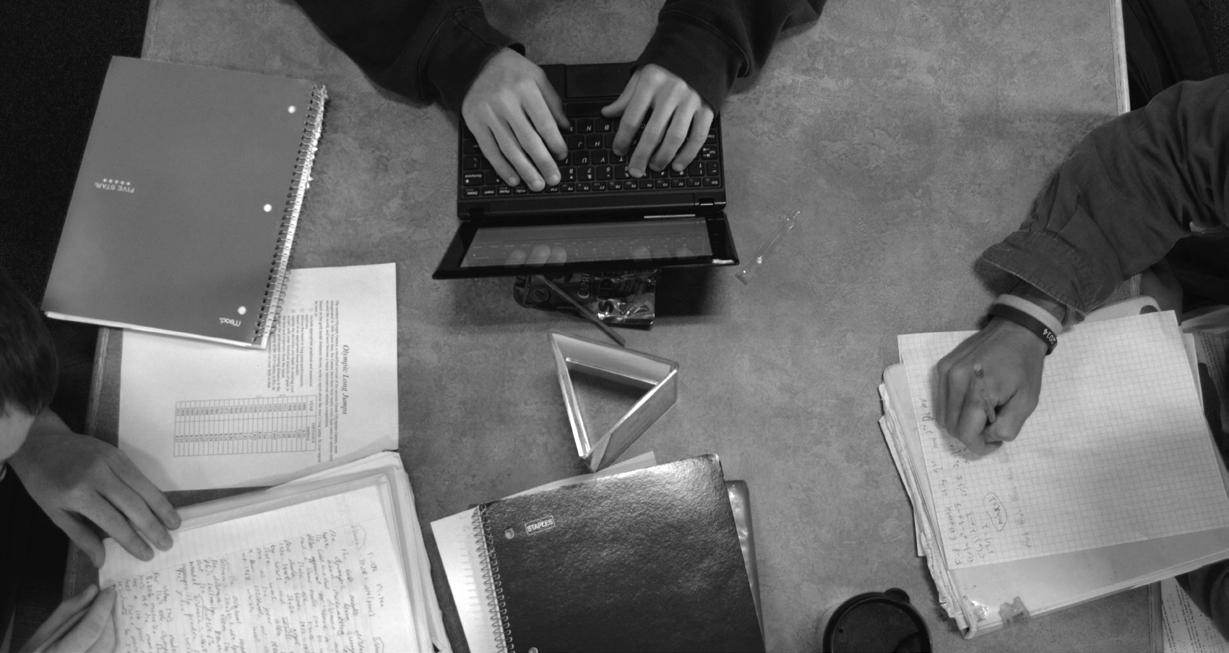
The second person you show your piece to for edit ing should be someone who you are more closely con nected with, such as a good friend or a family member. This should a be a person who knows you as well as you know yourself and who can give you feedback that will make your writing tru ly reflect who really are. “In the end, your essay should convey the essence of who you are,” explained Young. This piece of writing is a vi tal section of your college ap plication. It is one of the only things that will really per sonalize you from the other applicants, it will humanize you and make you seem like an actual person rather than just a bunch of high school transcripts. To see the key points from the article, refer ence the box to the side.
Zephyr Jaeger Guest Features Writer
13 FEATURES
Getting to Know Mr. Milliken
Our New Dean of Staff

“I have yet to see him in a mood that is not friendly or welcoming” says senior Pi eter Zwart of the new Dean of Faculty and Staff Mr. Mil liken.
Mark Milliken just started his first year here at Oys ter River High School- but Milliken is no newcomer to the teaching world, hav ing taught for twenty years he has materialized a very well rounded idea of how a school should function. Milliken hopes to bring his experience and knowledge from teaching to really help the faculty here at ORHS function at their best.
Although Milliken is the dean of the staff, you will of ten find him talking to stu dents during lunch or com ing and sitting in on classes. “He comes around to some of the classes and asks the students if there is anything
Millik
en’s last five years were spent working at Sa lem high school and be fore that he jumped around a couple different schools teach ing High School, Middle School and Elementary. In addition to his teaching background he also took ten years off to venture into a business career. “Its good to have all those experiences and be able to bring them here”
that they want him to work on, being the new admin istrator. I think this really gives kids a chance to voice their opinion in a comfort able setting and makes him a really relatable person.” says Senior class President Katherine Howard.
comments Milliken. He is also no stranger to the Oys ter River area, having had both his two daughters at tend ORHS and his wife, Barbra Milliken, a long time language teacher here as well.
“I think he is doing really
well, he loves the job, and its such a huge difference from the school he was at before that its just qualitatively so much better. He thinks the kids are incredible and the teachers are incredible. I think he is going to love it, I think he is going to fall into a grove. I think its hard right now because when he is doing teaching things its stuff that we the teachers have developed but after he’s here for awhile and he has more authorship in some of the stuff we’ve done then I think it will be even better for him. But I’m really excited, its fun to have him here and it’s the perfect job for him!” comments Mrs. Milliken.
One of Millikens first tasks was to take charge of
the parking here at ORHS, something that has been a long time problem for stu dents and staff. Mr. Allen commented on the fact that Mr. Milliken was quick to take over the parking situ ation here at ORHS, which he refers to as a job that “no administrator wants to take on”.
“Honestly, the parking issue is what I thought was the most urgent, and he al ready dealt with that. Since parking has been a huge issue at the school for quite some time, I think it is great that it has already been con sidered a large accomplish ment for him.” says How ard.
According to Milliken settling in Has been easy, saying that “students and
“I definitely think that Mr. Milliken is a good fit for Oyster River, he relates to the students and brings a new perspective to our school”- Bella Saputo
14 FEATURES
Milliken working at his desk
teachers have a lot of re spect and teachers have respect for other staff and students. Its a high achieving school, high standard. Very refreshing to see how focused students are and how important school is.” “Sometimes I ask myself if this is real” Milliken jokes. To ensure that the students and staff are settling in with him too, you will often see him on the side lines of soc cer games or waving and smiling at passing students and staff in the hallways. “I definitely think that Mr. Mil liken is a good fit for Oyster River, he relates to the stu dents and brings a new per spective to our school” says Junior class President Bella Saputo.
According to Milliken the change from working at Sa lem high school to Oyster River high school is huge, and not just in the commute
difference Milliken joked. “The kids here have a lot of freedom. My students at Salem would have died to have been able to go some where for lunch or outside or a core. They just didn’t have that. They could not leave the building. A lot of others school have had a lot for structure and a lot less freedom but also a lot more behavioral problems and a lot more teachers who are just burned out. So its really
and one of my big goals is to encourage student voice and that if theres an issue they can come forward and talk to me and I can explain why it is that way.”

Mrs. Anderson the new addi tion to the social studies de partment said “ Mr. Milliken probably is one of the best dean of faculty I’ve worked with, [He’s} really accom modating and really helpful. He has been very supportive and offered if there was any thing else that I needed or any other resources I could use. He goes out of his way to get to know the faculty and also to help increase different ways to instruct and different methods to instruct.”
bridging the gap between students and administrators with his friendly personali ty and reasonable approach to dealing with problems. I look forward to having him around for my senior year and I encourage anyone who sees him to talk with him about questions, concerns, or just to make conversation!” says Zwart.
refreshing. Part of it is the freedom, you kids can take a break or go outside and you can come back to school re freshed. Its a two way street and for the most part kids seem to respect that.”
Milliken says that his big gest tool with helping the staff and students is he to was a teacher. “I am a teach er, I still feel like I’m a teach er, I hope they can talk to me
Milliken has already sat in on a couple classes and hopes to continue to be able to sit in on even more, and to continue building re lationships with more stu dents and staff.

“Mr. Milliken also dropped in to talk to my philosophy class to introduce himself and to answer any questions we had. I think he is going to be a very positive addition to the ORHS administration. I think going forward he will play an important role
Milliken hopes that staff will understand that with his teaching background that he to has been in their shoes, and that this will al low him to better problem solve and that the students understand that he is a very open and friendly guy, who would love to hear your com ments or concerns. For some hallway conversation start ers ask Milliken about any of the five marathons he has run or about his dog!
Isabelle Todd Features Writer
“I am a teacher, I still feel like I’m a teacher, I hope they can talk to me and one of my big goals is to encourage student voice and that if theres an issue they can come forward and talk to me and I can explain why it is that way.”
15 FEATURES
- Mr. Milliken
The Return of Vinyl

How and Why Records are Making a Comeback
“As a listener, something special happens when you can see the grooves on the record, almost as though you’re seeing the music. Watching the disc gently turn on the turntable. These are incredible experiences you can’t reach through any other medium. In regards to CDs, cassettes, mp3s: yeah they’re convenient and I love them, but convenience should not dominate your listening experience,” said Alex Harling, an Oyster
being recreated and sold at an even higher rate than the decades directly following their debut, and more and more artists are releasing their albums onto vinyl once again, which is mu sic to the ears of collectors, those above the age of 35, and even your weird hipster friend.
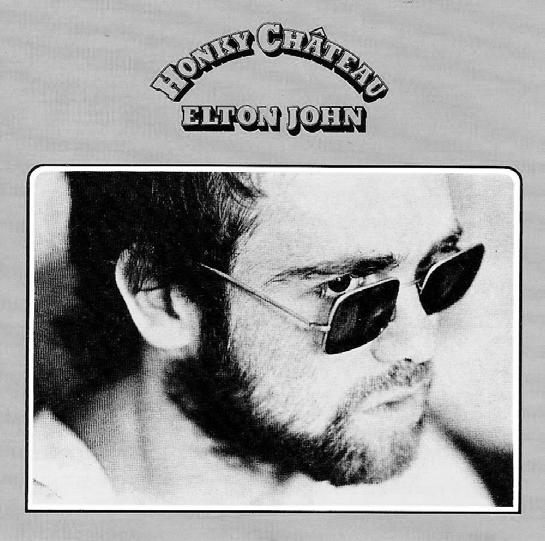
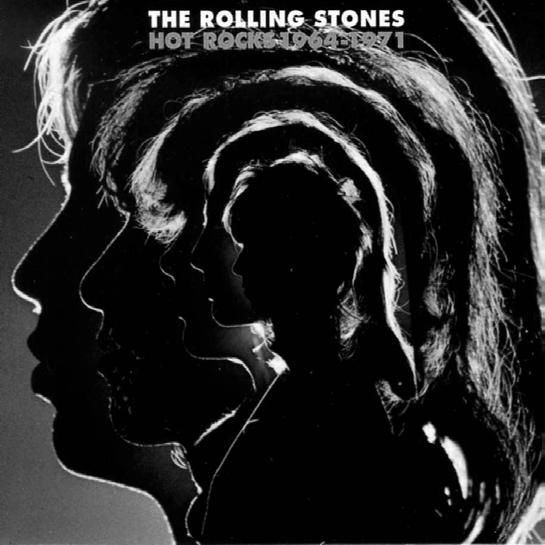
River alumni, and an avid record collector.
When the modernized model of the vinyl record was released by Colum bia Records in 1948, it was considered one of the most unique inventions of the 20th century. It offered not only a collectible element in its bold, artsy sleeve, but also the cover-to-cover al bum experience and a rich er and warmer sound than its digital counterparts. Now, almost 70 years lat er, old school is making an impressive comeback. Both records and turntables are
In fact, it has become quite recently indicant that the interest for records has been quickly rising; the level of sales increasing each year (exponentially more from 2006), and prices escalating as well. Albums range from twenty to fifty dollars per album, depending on the artist, age, condition, and countless other factors. Ca sual inventory stores like Best Buy, Barnes and Noble, and Walmart have all be gun adding records to their inventory, in addition to some clothing stores such as Urban Outfitters. Even Bull

Moose, a local music store based in Portsmouth that has always offered used re cords has begun selling rec reated vinyl as well. With
the apparent craze for the black discs making their way back into mainstream popularity, record owners and music collectors every where are left wondering “why”? Records exemplify the technology of a gener ation that has long since passed, so in what circum stances are they returning with such a dominance?
Mrs. Van Dyke, a human ities teacher at ORHS, be lieves that the root of the vintage upheaval can be at tributed to the preservation of a record’s worth: “I think that, in a way, this genera tion feels nostalgia for the physical connection to mu sic that the last generation once had,” she said, and
then elaborated; “The mar ket now is for people who can afford them, not just anyone with a few dollars to throw around. It makes for a sense of value, and supports the concept of rar ity; that it will cost me more than a nickel to regain that obscure feeling of when I was a child.”
anyone with a few dollars to throw around. It makes for a sense of value, and sup ports the concept of rarity; that it will cost me more than a nickel to regain that obscure feeling of when I was a child.”
Van Dyke isn’t the only one who values the phys ical trait to records either; the market extends be
“I think that, in a way, this generation feels nostalgia for the physical connection to music that the last generation once had.”
-Karen Van Dyke
16 FEATURES
yond older consumers and to college and high school students, but in a whole dif ferent perspective. “You can hold vinyl and that’s so cool! You’re holding your music and on an iPod it’s just cold metal. Vinyl is physical mu sic and there’s something great about setting the needle down trying to find the right spot,” said Gabi Meyerson, another alumni. Meyerson exaggerates that the aspect created by the direct relationship between the needle and the grooves create the most attractive feature of vinyl- and other younger consumers like her
agree. “They go through a really cool process when they’re made- a lot of people light up when they set a re cord onto a turntable,” said Monica Clough, a junior at Portsmouth High School. The process really is intri cate- “A microphone is at tached to the artist’s throat, and the sound waves ripple and create the grooves on the surface,” explained Van Dyke. Of course, it is far more detailed than that short de scription, but the complicat ed dynamics are the very reasons consumers like Meyerson or Clough find exhilaration in the experi
ence. “They’ll always have something special in them,” Clough added. “If records stopped being created, the business would likely dwindle after a century or two. Some people dig the vintage but others prefer to listen to more recent al bums and artists for the sound. The artwork on the albums have a lot of mean ing behind them.” So could it be possible that the value of a record is primarily based upon its structure and form? Chris tian Burt, a junior at ORHS, believes that the art com ponent has something to
do with it. “The cover is a piece of art, the record itself is a piece of art…the whole, final product has a theme to itself.” Burt supports the enforcement of the idea that music is in fact a form of art, and not just an audio file.
Undoubtedly, the vinyl re cord remains relevant in a current and constantly changing era- and not only have they transpired to become antiques through sentimental worth, but they have also adapted by means of material reminis cence. After all, they are the last of their kind- a species that has long since been re placed with touch-screens and devices that fit into your pocket.


 Forrest Spinney Guest Features Writer
Forrest Spinney Guest Features Writer
Department
17 FEATURES
Infographic: as of 2012 vinyl sales up 250% from 2006, and 17% from 2011 (courtesy of thestrut.com)
Get A Head Start
Why High School Students Should Intern
The most common uncertainty among teenag ers lies in their future. From an early age we are asked “what would you like to do when you grow up?”. And while many students believe they will find the answer to this question through aca demics, I believe you must find it through yourself. It is unfortunate that so many of my peers are unable to identify that which they are truly passionate about, and while I don’t personally believe that you can iden tify your interests through academics alone, there are a whole host of real-world opportunities available to teenagers; you just have to know where to look. The first step is being able to identify what you are interested in. The second step is finding
successful people with sim ilar interests, and learning everything you possibly can from them. Internships, job shadows, apprenticeships, and assistant positions can be the most valuable thing a high school student can do. In fact, I believe that your teenage years is the most ideal time to seek out intern ships, given the fact that we are (mostly) financially de pendent on our parents, and we have the freedom to work as unpaid interns or to ex periment with different job ideas without the pressure of earning a livable salary. Es pecially for those looking to turn their art or craft into a job, high school is the perfect time to hone that skill with out the burden of loan dept, rent, or other living expens es we will soon face. Rather
than waiting for a job that sounds bearable to be chosen for us after college, I think it’s important that each and every teenager identify the things which they are truly passionate about as early as possible, and to pursue pro gression and development in that field while still under the financial shelter of their parents.
I was lucky enough to have spent time with two separate creative studios this summer. The first was Dorian Orange, a Manhattan based compa ny from which I learned an invaluable amount while spending time with them for a week and working as
somewhat of a production assistant. The second was Jamtron, a Boston based company which I got to see the inner workings of, after
being introduced to Creative Director Jeff Ledellaytner, by Shawn Kelly, an English Teacher at ORHS. I feel un believably fortunate to have been introduced to Ledel laytner, who has since hired me to shoot with him as a freelancer; a job opportuni ty which would have never come my way had it not been for Kelly. I would encour age all students at ORHS to talk to people who not only share similar interests, but are successful in said in terests. Networking is the name of the game, and while it’s obviously important to pursue experiences on your own time outside of school as well, realize that there is a vast amount of adults with diverse backgrounds and connections within our school. While there are many aspects of our education sys tem’s academic methods that I disagree with, a school can hold a great amount of op portunities for teenagers. These opportunities lie not in the actual curriculum, but in the fact that we are sur rounded by accomplished adults. Former ORHS stu dent Ian Avery-Leaf can attest, having also reaped the rewards of living in such an opportunistic area. By getting to know ORHS video productions teacher Kathleen Young throughout his four years at ORHS, Av ery-Leaf was able to spend a summer as an intern for a
 Nathaniel Ruhlman, Creative Director at Dorian Orange
Nathaniel Ruhlman, Creative Director at Dorian Orange
18 OP~ED
video productions studio. “I got setup for a summer in ternship through Mrs. Young, spring of my Junior Year. She knew a perfect studio in ports mouth run by two brothers,” explains Avery-Leaf. Like many teenagers who aspire to one day turn their passion into a job, Avery-Leaf recog nizes the value of real-world experience. “It showed my what video work was like outside of the classroom en vironment, I was there first hand to witness negotiations with clients, logo designs, studio brainstorming, and of course filming on locations,” says Avery-Leaf. While some people including Avery-Leaf may end up working a whole summer as an unpaid intern, many will agree that experi ence is invaluable. For many people, an internship can serve two purposes; either by showing the intern that the chosen profession is not the one for them, or by reinforc ing their passion for the field. For Avery-Leaf, it was the lat ter. “Since day one at the stu
dio I knew it was the perfect line of work for me,” he states.
ORHS alumnus Andrew Gass was able to find intern experiences that served both purposes. During his Junior year, Gass spent a semester interning with the Foster’s Daily Democrat sports de partment. “I would tag along to sports games and then have to write up reports and submit them by a deadline,” he says. By the end of his in ternship, Gass had a story published on the front page of Foster’s, but had decided journalism was not for him. In his senior year, Gass spent a semester with Oyster River Middle School English Teach er, Susie Renner. This intern ship was an opportunity for Gass to “observe, and some times help out with writing or other needs,” he says. “I was also able to teach a few lessons during the course of the semester,” explains Gass. Gass had help from the counseling office at ORHS, who contacted both Fosters Daily Democrat, and Renner.
“Both internships were set up through Kim Sekera at the high school via the internship program, she did an incred ible job helping me find in ternships that accommodated my interests” he says. “Both internships were incredi ble and I can’t stress enough how grateful I was to have the opportunities” says Gass. “Through the internships I found journalism was not so much my cup of tea and that I could use my love of writing in a different way; becoming a teacher,” he says. Like myself, Gass advises all high school students to look for similar opportunities; “if anybody has any doubts on what they want to do I would say pur sue an internship because not only do you get [high school] credits but you get a first look at what a certain career really looks like.”


While students like Av ery-Leaf and Gass were able to find experiences through the school, some students have chosen another ap proach. ORHS senior James
Glass spent two weeks in July as a paid intern on a luxury sailing yacht, gaining experi ence as a full time deckhand. “My grandfather, an ex navy officer in the Italian navy, is good friends with the own er of the boat, and I went through him to try and get the internship. I had to per sist and keep at it, especially since the owner was halfway around the world, but even tually I was able to coordinate the logistics to make it hap pen,” explains Glass. Glass went into his internship pre pared to learn and with an open mind, as anyone should when approaching an expe rience such as this. “My du ties included cooking for the guests, cleaning both the top side of the boat as well as the guest quarters, assisting the captain in navigation and sailing the boat, and learning yachtsmanship from the first mate,” says Glass. But what he really took away from the two weeks on the boat, was a greater perspective. “It seemed like I had opened my eyes a bit more and seen (INTERN, cont. page 24)
Sam Colby Op-Ed Writer
Studio at Dorian Orange
19 OP~ED
Territory War
Sharing the Junior Core
Picture this: stopping by your locker between class es to find binders and loose paper being thrown around, lockers toppling over, bench es being ripped out of the ground, and a thick cloud of powder in the air, as if some one had discharged a fire extinguisher. Believe it or not, that once was the chronic reality for the area at Oyster River High School referred to as the “junior core”.
Just like open campus, or student parking, the entitlement to a “core” has always been considered an inheritance for upper classmen at ORHS. That’s why this September, students of the junior class were en raged to find that they would be sharing the locker space with sophomores for the year, and told by faculty that “there has never been a junior core.”

Although the class of 2016 had seemed to accept their fate after arguments began to disappear and frustrations expressed to satisfaction, the question still remains: was all of this really necessary? I think so.
Looking back on my years as an underclassmen, I re member thinking that my ascent to junior-hood would open up lots of new doors for me- and for the most part I wasn’t wrong. While it’s fair to say that materialistic re ward for the two years that I’ve spent here has had a
very real, existential value, I also think that students may be expecting too much from their time at school. So what factors help draw the line for what juniors should and shouldn’t deserve? And what makes a “core” a “core”? It’s
timid little freshmen that we all once were. “We’ve suffered through enough high school, we should have a space where we just like, chill,” said Porter McManus, a junior at ORHS. McManus is a perfect representation

al, but juniors were twice as much.” Everything from the abuse of the core benches, to the pushing over of the lock ers, to even the intentional misuse of fire extinguishers led to the eventual discontin uation of the core in 2010. After being asked whether or not he anticipated the re turn of the core, he replied no, “Because it was such chaos.”
obvious that the senior core is perceived as a rite of passagea privilege that seniors are granted for their four years. But where do juniors fit in?
I sat down with Principal Todd Allen in search of the answers. “Obviously as a physical space, they both ex ist, and the areas are really no different from each other,” he explained. “Although it is of ten called the ‘junior core’, it hasn’t been an area reserved for juniors for quite a few years, and it certainly hasn’t been an area that students are allowed to congregate in.”
Unlike Mr. Allen, not all his students are in the same mindset; being a junior my self, it’s easy to see why. Be ing an upperclassmen is all about segregation- it’s age that separates us from the
of the majority opinion, and the perfect example of the misconception that we are being revoked a core because we haven’t earned it, when in reality it has little to do with our achievements, and a lot to do with the level of maturity that the faculty can trust its students with.
Dave Hawley, a teacher at ORHS for 14 years, has seen many things - including the rise and fall of the junior core- and puts the blame of its destruction on the unpre dictable nature of junior stu dents: “Basically five percent of the population ruined it for everyone in the class thereaf ter. Sometimes juniors don’t have the same level of matu rity as the seniors- meaning seniors would get territori
Coincidentally, the two grades seem to be getting along quite nicely. “No, I’m not intimidated [by the ju nior class], mostly because I am friends with a lot of ju niors and I don’t get chirped or anything while I’m in the core,” said Maggie Hird, a sophomore. Although she lat er added that she hopes not to have the same experience in coming years, Hird is (CORE, cont. page 24)
Forrest Spinney Op-Ed Writer
Students talk in the second floor core during a free period
20 OP~ED
Peers As Resources
MOR’s Mental Health Column
According to reports from the U.S. Surgeon General and the New Freedom Com mission on Mental Health “Of children ages 9 to 17, 21 per cent have a diagnosable men tal disorder that causes at least minimal impairment.” This is a vast number of adolescents, and Oyster River students are no exception. If you have ever felt depressed, anxious, emo tionally unsafe or simply un happy, you are certainly not alone.
Perhaps the one good thing about having lots of peers who have also struggled with their mental health is that you have unlimited access to great advice from people who know what it’s like to struggle with such things. There is an amaz ing resource of passionate and strong individuals that are at your disposal for great advice and help, and the individuals that I’ve listed here are just a few of the many people who have struggled and overcome mental disorders at Oyster River High School.
“The best part is being able to help others.” These are the words of Gabriella Trombley, an Oyster River junior who is an eating disorder survi vor. She’s constantly doing things like recruiting support for National Eating Disorder Association (NEDA) Walks and raising awareness about the seriousness of anorex ia and self-harm. Trombley struggled with mental disor ders during her early teenage
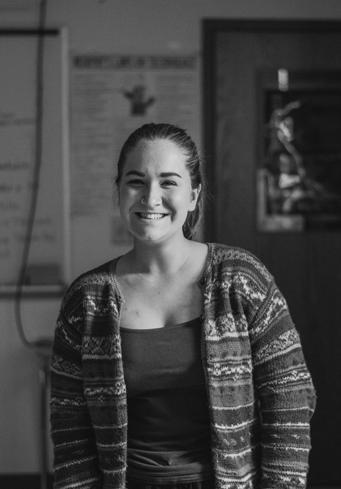
years, and though now recov ered, she finds pride and pur pose in helping fellow teenag ers get healthy. Trombley says that she believes “a lot of peo ple think that it’s to gain at tention.” However, Trombley knows first hand that the dan gers of mental disorders are all too real. She states that one of the most important steps is realizing you have a problem and doing something about it if there’s anyway you can.
and debrief. Doody says that it’s essential to “focus on your self and your happiness, that’s what’s most important.”
An Oyster River student who wishes to remain anon ymous adds his own experi ences with mental health to the discussion. He was diag nosed and treated for anxiety at age five, and though he has only recently received treat ment for depression, he has struggled with it for most of
the importance of teaching kids how to cope with men tal disorders. “Some can do it on their own, and some need help.” Machanoff has helped with cases that range from brief bursts of stress to full-out hospitalization. She makes it a priority to act as an in-school resource for stu dents with any level of insta bility, and she wants kids to get the help they need.
“I know it’s hard,” Trombley says “but ask for help.”
Maegan Doody also has ad vice to give when it comes to dealing with stress and anx iety. “If you are stressing out over something, just remem ber that it is probably not as important as you think it is.”
Doody is a star athlete and student, but before learning how to channel the pressure she felt she too struggled with maintaining her mental health. “I knew it wasn’t the way I should be dealing with my stress,” says Doody about her past struggles with self harm “I didn’t have a good system for dealing with it.” Now, she writes to-do lists every day to help her stay on top of things and says that running gives her the time and space she needs to relax
his life. “The pain was so slow, I didn’t really notice it.” The source shares that he takes medication for both anxiety and depression, but he points out that “the meds don’t make you better, they give you the ability to make yourself bet ter.” The source continues to say that being more mentally stable is really alleviating and has allowed him to “have a lot more confidence” and to be more positive.
The Counseling Department is cognisant of mental health issues as well. Heather Mach anoff admits that as a counsel or she sees a lot of kids every day who struggle with issues of depression, anxiety, eating disorders, self harm, etcet era. “It’s how they develope strategies to deal with them” says Machanoff, referring to
Whether you are a fresh man or senior, guy or girl, just having a bad day or strug gling with a serious mental disorder, seek out people who will support you. Your happi ness and mental health is so important and will probably determine whether your high school experience - and life - is positive or unbearable. Don’t allow yourself to get caught up in things things like anx iety, self harm, depression, or an eating disorder. There are teachers, family, friends, and fellow students all around you who know what it’s like and want to help you get through whatever you’re dealing with.
Madi Pelletier-Murrill Op-Ed Writer
21 OP~ED
“If you are stressing out over something, just remember that it is probably not as important as you think it is.” - Maegen Doody
Making a Difference Why Student Activism & Involvement Are Important

On September 20th, a small group of Oyster Riv er students joined hundreds of thousands to rally in New York City, marching in soli darity in the People’s Climate March. They carried signs swathed in vibrant colors, bearing catchy phrases and slogans. Their voices chanted together, with one message emerging from the mass. They wanted climate justice, and they wanted it now. Oyster River has seen its fair share of activists throughout the years, and many have
munity involvement for all age levels, but the surprising lack of students at Oyster Riv er who choose to take part in causes that are important to them surprises me. Further more, the apathetic mold that seems to be very prevalent with high school students opens those who do choose to be politically or socially ac tive to ridicule for caring.
ORHS offers many oppor tunities for students to be active in causes they deem important. From the Power of One project as a freshman,
pating in Relay for Life since she was a freshman. Nanda finds that giving back to the community is important be cause it’s important to help the world around you. “There is no con to helping people when it costs so little of your time,” Nanda said. “There are a lot of problems in the world, and a lot of things that people care about. However if you don’t do anything about those things, you can’t really say you care. Change happens when people take action, and if no one takes action on any thing or gets involved, noth ing will ever change.”
graduated to become active in college and beyond. I be came involved in activism my freshman year of high school, and started working with the organization New Hamp shire Youth for Peace and Justice (NHYPJ), along with a couple of other Oyster River students. Over the past few years, I’ve realized the impor tance of activism and com
to Community Service Club, Relay for Life, and Sustain ability Club, the options are there for students to be in volved if they so wish.
Relay for Life is an organi zation in which students raise money for cancer research, culminating in a giant relay walk at the end of the year.
Payal Nanda, a junior at Oys ter River, has been partici
Here at Oyster River, we are fortunate enough to grow up in a supportive community, and the privilege that we’ve grown up with might some times make us naive to the re ality of the world around us. Sophie Webb, a senior at Oys ter River, also finds giving back to be important because of the privileges that she has been brought up with. “I have been given to my whole life. I am such a fortunate person and because of that I have the ability to give back and it is my responsibility as a good citizen of this community ( global and local) to do that.”
Students at Oyster River are given so many resources to affect positive change in their communities. Because of these opportunities and privileges that we are given, it’s our responsibility to take advantage of them.
For many, the World Cul tures class we take as fresh man really opens students’ eyes to what’s going on in the world, and gives them the opportunity to give back to their community. World Cul tures teachers Dave Hawley and Pamela Raiford found that the class delivered a lot of content that could be pret ty intense and hard hitting. Because of this, the Social Studies department sought to come up with a project to combat the hard hitting con tent delivered by the class, thus creating the Power of One project. The goal of the project was to make students feel like they could do some thing positive for the world, after learning about what is wrong with it. “One of my major goals as a teacher is to help students see that they are active participants in the world that they live in, and that the world that we live in is a world that we help shape. These forces and events, they’re not inevitable. They’re so often a product of human choice and how we decide to move through the world and what we value,” said Raiford.
“I think the Power of One is sort of a time where a lot of ninth graders really start to think about [activism]” says Kim Sekara, a counselor at Oyster River. Personally, I found the Power of One proj ect to be extremely beneficial and greatly influenced me to become more socially and
ORHS students at the People’s Climate March, in New York City.
Photo Credit: Chris Dundorf
22 OP~ED
politically active, but many students did not feel the same way. Matt Silverman, a junior at ORHS says that he found the project to be a waste of his time. “As a high school student involved with extracurricular activities, it created a very difficult situa tion to cope with doing such a large project that had such high standards as a freshman struggling to get used to high school,” Silverman explains. He also finds that sometimes students don’t really make that much of an impact. “Not many students are that in vested in the project from my knowledge [for it] to really work and make an impact.”
Silverman brings up a good point. Not many students have the time to be involved in their communities be cause they’re so busy with school work and sports. Nan da agreed, saying that kids’ schedules are so busy they of ten don’t have the time. “Kids these days are expected to do everything; get good grades, play sports, do homework, community service, other extracurriculars, SAT prep, have a social life, get sleep and that all can’t happen. So some might just choose to knock community service off the list because it’s not their priority,” explained Nanda. Although students’ sched ules are busy, volunteering or being active in their com munities is still very reward ing. And while priorities may be in school work, or sports, finding something you care about- no matter how small is so incredibly important, and any action is better than none
at all.
From Sustainability club to NHYPJ, I have encountered both students who aren’t very receptive towards activism, and students who are trying to make a substantial change in their schools. “The student activism can sometimes be in conflict with what your own identity is, and social group,” said Sekara. She explained that she finds students feel the need to be exclusive to their social groups, and that because of that they find it hard to be activists.
“There is definitely a real ly intense culture of apathy in high schools around the country and theres also an aspect of peer pressure that people who break the apathy mold feeling like you can be made fun of for caring,” add ed Alex Freid, Oyster River alumni and co-founder of the Post Landfill Action Network (PLAN). When Freid was in high school he created a dis play of plastic bottles to raise awareness for high school student’s consumption of plastic, and then had it stolen by the boy’s basketball team. He also worked to use silver ware utensils instead of plas tic ones, and would find them in the urinals and on the roof of the school. “There’s

a benefit to finding support networks, [that’s] one of the reasons I really wanted to create NHYPJ as an organi zation was to help students in one high school find students in another high school and to feel part of a community,” Freid explained.
Webb has also encountered her fair share of students who haven’t been receptive towards her efforts, but she thinks it’s something that comes with age. “I think that’s
a function of the age and the environment for some kids. I personally think getting involved helps to curb that apathetic culture. As soon as you are involved in some thing you care about and you are investing time into it, you have less time to be apathetic and negative. I think if kids at a great school like Oyster River take advantage if all the opportunities around them, high school can be a really positive thing.” One of the struggles that Webb has been facing is getting students to compost at school. Webb said she doesn’t necessarily find students belligerent to wards her efforts, but there are definitely some who just don’t care. No matter what the cause is, be it cancer re search or making the school
more sustainable, those stu dents who choose not to care and not to pay it forward are the “poison in the system,” as Webb put it. Nanda and Webb both find that through the work they’ve done for community service, they’ve built up many skills that are going to help them in the “real world.”Nanda says: “ I have developed better com munication skills, whether that be with my peers, or em ployees at various business es. Those people skills, and sort of being able to get past being nervous when talking in front of groups I am sure is going to help me later on, because no matter what field I go into I’ll have to cooperate with others.” Webb volun teers with the Community Service Club. And has coor dinated trips to visit nursing homes, and other community service projects. “All of these skills will definitely help me in the real world, as all I want to do is create change. Com munication and leadership are key to achieving that,” said Webb.
Even if fellow peers do not appreciate the efforts of some to make a difference, their actions do not go unnoticed. Power of One projects have raised thou sands of dollars for various causes, and orga nized huge volunteer trips for events like the Special Olym pics. “The idea in supporting high school activism is in al lowing those people to feel like there is a benefit to using their voice and finding ways to use their voices effectively to make change,” says Freid. High school activists have so
Relay for Life’s annual prom fasion show fundraiser.
23 OP~ED
Photo Credit: Payal Nanda
many opportunities to make change locally, and nation ally. Student’s voices carry a lot of weight, and there is so much support and many resources available at a high school level. One benefit of activism and involvement at the high school level is the closeness of a community, and being able to reach out to the community for support.

Currently, our world is fac ing so many problems that as a generation, we are going to inherit. “I think there are
(INTERN, cont.) more of the world, which allowed me to see myself and my priori ties in a different light,” says Glass. Glass believes that the importance of an internship is really all in the experi mentation; the trial and er ror. “Maybe you’ll find a new passion, or maybe you’ll de cide that what you wanted to do isn’t really the right choice. You’ll never know if you don’t try,” states Glass.
While people such as my self and Glass were able to find opportunities outside of school, other’s opted to con nect it with their high school schedule and receive credit. This bridge between intern ship and school is formed by ORHS Director of Counsel ing Heather Machanoff, and ORHS Economics teacher
(TERRITORY, cont.) one of the many that, rather than feeling evasive, have a level of comfort with the supposedly “hostile” environment. Cait lyn Miller, another junior, comments on her thoughts towards the matter as well:
some very serious and real is sues that we face as we move into the future and we can’t just ignore those,” said Rai ford.
This daunting list of prob lems requires solutions, and the only way we’re going to be able to solve these problems is to organize. Small groups may feel like they cannot do a lot, but when all those small groups get together for one cause, they can affect change. Take the People’s Climate March, where 400,000 people
Heather Healy. As it turns out, a student could involve the school with pretty much any internship they wish, as long as the place of choice adheres to certain insurance qualifications. The school can provide the student with the opportunity to receive credit, however the effort of course must come from the student, or as Machanoff explains: “you have to choose a place to do it based on your inter ests”. For those students look ing to earn credit for their internship, a structured plan must be established. “You [the student] goes to the in ternship site for a set amount of hours per week and Mrs. Healy visits the sites and tries to see how students are doing,” explains Machanoff. The structure is where Healy
“Sophomores should be wel come wherever they feel. I just come here to learn- who cares about who’s next to me?
If it’s a junior, so be it. If it’s a sophomore, so be it.”
Perceptions like Hird’s and Miller’s are just the more
from hundreds of organi zations around the country came together to march for one cause- climate justice. “It’s about finding our pas sion,” said Raiford. “It needs to be being aware of major issues that we’re confronted with, but it also could be be ing an artist or a musician, or having a life that we feel we have control over and we’re making choices that matter, to us, and hopefully to the people around us.”
Abby Colby Op-Ed Writer
comes into play. “My role is to be the teacher on record so to speak, for their transcript,” explains Healy. “We make sure before they start their internship they make a set of goals they’re trying to meet,” explains Healy. The reason ing behind this is to allow the school to see a documented experience in which the stu dent can prove they learned something. “The goals estab lished at the beginning have to be met in order to receive the credit, which are always going to be unique to the in ternship and student,” says Healy.
While my own personal preference is to not connect the school with my experi ences outside of it, students should know that this is an option, and that now is the
proof of unity between ju niors and sophomores, and the absurdity of any nega tion towards such. Whatev er the future holds, it will most likely not promise any layout change regarding the core, which perhaps isn’t so
time to identify their inter ests. Had I not had the oppor tunities to spend time with Dorian Orange, or Jamtron, I would be in a much different position right now in terms of my accomplishments and understanding of the indus try. Despite neither of these opportunities being a prod uct of, or contributing to my academic performance, I still consider them to be the two most valuable experiences I’ve had while a student at ORHS. Given the experience gained by every ORHS stu dent who has had an intern ship, I think each and every high school student would benefit from having similar expereinces.
unfortunate. It’s been made clear that it belongs to no one class, and so what’s the use in complaining? So I regress; to those of my readers who con tinue to feel conflicted, take a deep breath, and learn to share- it’s only a locker.
24 OP~ED
Superfandom Extinction of the Super Fans
Back in the day, Super Fans were the rulers of sporting events. When they told you to cheer, you would. They had re served seats, waving flags, and organized chants. The magic of it all was the inten sity and dedication. No matter how hard it was raining or how much the odds were stacked up against an Oyster River team, they were always there. They didn’t come just to support the teams, but also because it brought the school together. Games were exit ing and unified the school.
Cassy Sweatt, gradu ated from Oyster Riv er in 2001, and was on the volleyball team. “Our fans were great! We had a smaller gym then, but they filled up the bleachers. They dressed up and painted their bodies, and cheered all throughout the game, we loved it,” said Sweatt.
Kevin Kerrigan, junior at Oyster River and avid game attender, thinks the defini tion of a Super Fan is “some one who comes to as many games as possible, and a wide variety of them. They
encourage our team and create a fun and intense at mosphere for all involved,” says Kerrigan.
Kerrigan agrees that there has been a significant change from a couple years ago to now. “I remember having to sit all the way in the back of the bleachers at basketball games because there was so many upper classman attending, we
took up two sections,” Says Kerrigan. “They were so loud, and had chants that got everyone excited and in volved.”
All fans are important, but there is something spe cial about the Super Fan Crew that rallies everyone together and creates a uni fying force. The players can only do so much to get kids there and cheering. Some

teams create Face book events, play in tense warm up mu sic, or come up with their own cheers. The players are there to play though, and get ting people amped up from the field, ice, or court is not their focus. For the Super Fans on the other hand, it’s on the top of their list.
Sarah Cusack soph omore on the varsity volleyball team has experienced how the fans can help a team win first hand. “In our first game, we were struggling; the energy in the gym was low. Slowly the bleachers started to fill up a little. Our team had more mo tivation and we did a lot better. The soccer boys are our biggest fans” said Cusack. Not a specific group of kids have seem to have taken the reigns of the su per fan crew from previous years, but hopefully a group of upperclassmen will step up and ignite a fire in every one around at games.
Sierra Carpenter Sopho more at Oyster River and on the Girls’ Varsity Soccer Team depends on the fans. “I live for the home games; I
25 SPORTS & CLUBS
play better when kids from our school are watching and cheering,” says Car penter. “Yes, I play because I love the sport and my team, but when our fans are there it gives me some thing else to play for. I run a little faster, and defend a little bit harder.”
Kerrigan thinks that a lot of the lack of spirit is due to the administration. “Corey Parker has really cracked down on the row dy fans during games to promote sportsmanship, which some think takes away from a lot of the entertainment that a lot of kids look for when they come to games.”
“Parker is out to get me, I think that he cracks down on us too much,” says an anonyms source. Corey Parker is Oyster Rivers Ath letic Director, and takes care of our student athletes and anything sports related at our school. Some students don’t agree with Parker’s de cisions, and others say he is just doing his job as a sports administrator.
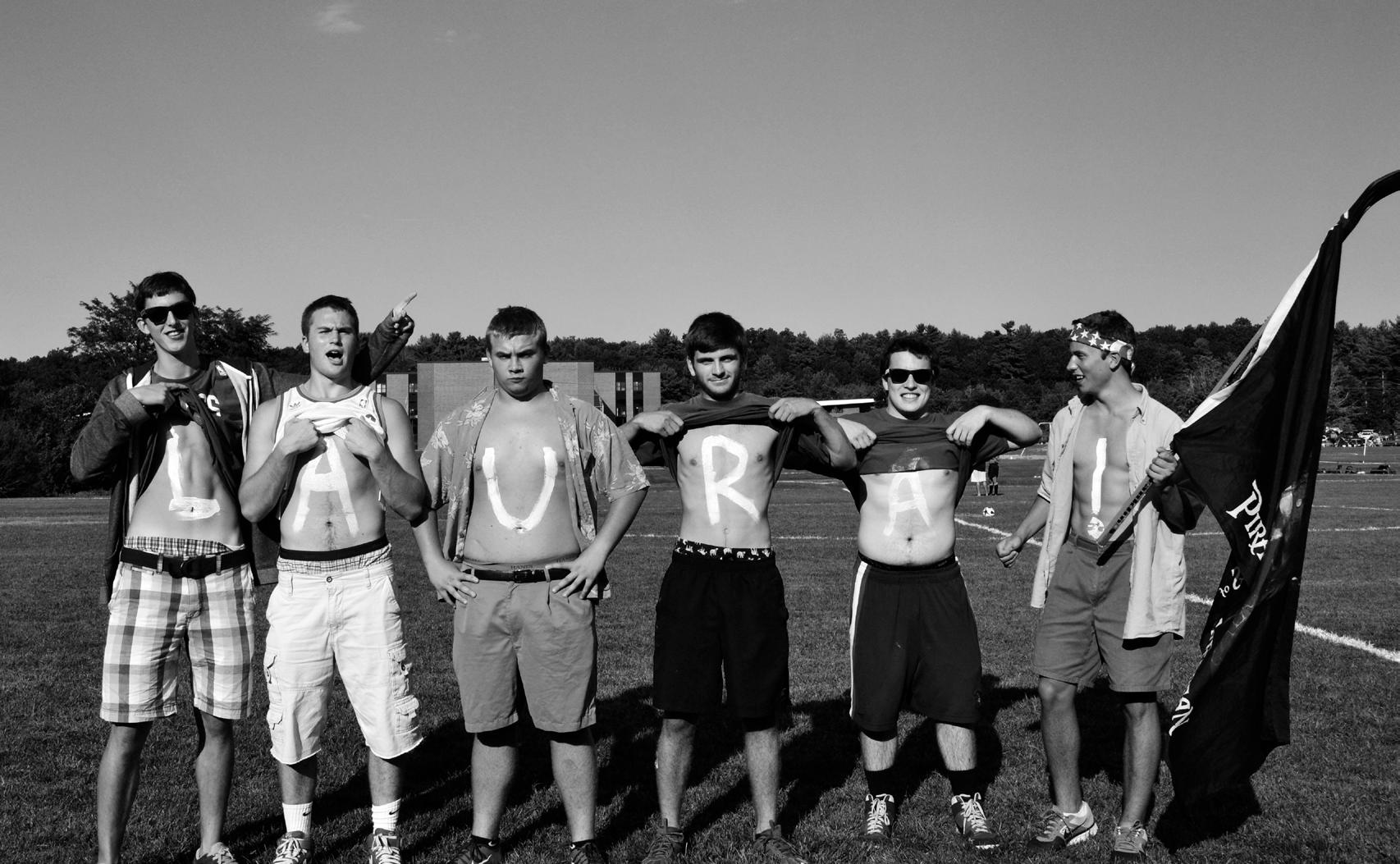
“I get calls from refs, coach es, other athletic directors, and parents. When students are surrounded by friends, they don’t necessarily know who else is listening,” says Parker.
Administration had to stop sending around the “super fan” sign in sheet due to students writing “crud” and inappropriate things. Team spirit had to be eliminat ed because of several com plaints from staff that outfits were “distracting and inap
propriate for students to be wearing in school.” Pulling students aside because they were singling out a girl on the soccer field, and telling her “she sucked and was fat.” These are all situations that have happened this year that were misconstrued as Parker being “out to get” students.
“I, in no way, want to spread the atmosphere that we don’t want fans. That is not the case at all,” says Parker. Parker thinks that the pass ing of the proposal to get a legitimate stadium at Oyster River will really help with the lack of fans.
“Looking back at the boy’s Semi Final game in Exeter, there was around 150 kids there cheering as a school instead of individually, “’chirping’ players,” says Parker. “That’s the kind of atmosphere I want at every game here at Oyster River. Andrew McDonald, senior of 2014 had great Super Fan role models: Julian Pelleti er, Rye Morrill, and Seamus
Clancy, all loud, proud, and dedicated Bobcats. McDon ald would wave the pirate flag or bang on the glass at hockey games, and he feels very strongly about the Su per Fan legacy to continue. Here are his words to the student body.
“Forget the national hon or society, forget the century club, the group that will be remembered in the pages of history will be the bold few who dared to be fans. But not only fans, some thing more...the word heroes comes to mind. They fear no heavy rain, harsh sun, or angry athletic director. They sit with unwavering resolve and constant excite ment in their folding chairs with their blankets, flags and capes waving in the breeze. They scream for vic tory, sportsmanship, and oc casionally for the officials to see an eye doctor. It is these screams which constitute the life blood of Oyster River’s fine sporting teams. Wheth
er a win seems inevitable, or a loss feels unpreventable, the super fans will be there. They pump energy into the match reminding the Bob cats what they’re fighting for, all while reminding oth er teams that ‘their shoes are untied’ or that they’re gar bage’ or simply that they are in ‘our house’. Indeed noth ing could be more important to the school, the teams, or to America than the super fans of Oyster River. Among those rising in the ranks of super fandom I would high light young Daniel Bevins, a man who kills what he eats and eats what he kills--a true American, with his ac complice, Arun Falk. I sleep soundly at night knowing Dan, Arun and the rest of our Bobcats are cheering on our boys and girls in blue.”
Dan Bevins, senior at Oys ter River, was eager to take on the role of super fan this year. Bevins has tried to have a tailgate before volley ball games and get more
26 SPORTS & CLUBS
people exited for games “my efforts have failed and the passion seems to have died,” says Bevins. “I would proudly lead my fel low classmates into games, matches and events, to cheer on the mighty Bob cats in the great title of the super fan! The only prob lem is that there is no army, and we have slowly failed as a school ever since the
class of 2013 has graduat ed. Fans have begun to dis appear and then came the decision to rid the school of super fans all together” Bevins doesn’t want the student body to be phased by this “Their talent and passion is missed through out all the teams here at ORHS,” finishes Bevins. Although it is early in the year, it’s clear that the fans
were not as they once were. Think about a field packed with kids from our school, and cheering and support ing our players, and when the game is over all the kids storm the field. Or a volley ball game with two sections of bleachers screaming and banging on tin cans in uni son. This year is what we make it. Go big or go home, Bobcats.
Haley Parry Sports Writer



Mike the Trainer: Your Best Friend The Increase of Athletes’ Injuries?
“Busted collar bones, sprained wrists and ankles, pulled groins, torn ACL’s, I could go on and on with injuries that come into my office,” Mike Feld, athletic trainer at Oyster River High School said. Injuries can be common with athletes, as Feld put it “there’s always one.” However, it seems like the beginning of this year has had an increase in ath letic related injuries, and athletes working hard to stay in the best shape they can possibly have.
“On the [boy’s varsity soccer team] we have one out for a meniscus tear, and had three out for con cussions. That’s in cluding me,” Varsity goalkeeper Jon Dutka chuckled. Along with the list Dutka gave, there are even more with the other sports. The girls field hockey team has one player with a broken hand, girls
volleyball has one play er out with a concussion and another playing with an ankle injury. The girls soccer teams all together (JV and Var sity) have one player out with an ACL tear, two with pulled hip flex ors, one with a strained groin, one player out for the season with a back injury, and two playing with ankle injuries. With that kind of list it can be hard to believe that the school is only one sea son in with athletics. “We still have winter which has
gave thought to the list of current injuries in the fall season.
and are taking more action when they feel aches and pains.”
sports like hockey and bas ketball, and spring which has lacrosse and baseball, to name a few sports that I know always have a ton of injuries,” Senior Alex Moui kis said in disbelief after he
So what is the deal with all of the athletic injuries? Feld says it’s normal. “Af ter all of the meetings and pre-season talks we’ve had with teams stressing the idea of taking care of your bodies, especially with concussions which seem to be a big thing with our athletes,” Feld chuckled, “players are start ing to become more aware,
Kirsten Weiker Sports Writer
“Players are starting to become more aware, and are taking more action when they feel aches and pains.”
-Mike Feld
27 SPORTS & CLUBS
Stadium Bound?
Changes in Behavior With a New Setup
It all starts out as a dis tant rumble, a subtle shake beneath your feet. The vi brations begin to intensify, become louder and more violent as time slowly ticks by. Then theres an eruption of shouting and scream ing so loud you can barely hear yourself think. That’s what it’s like when the fans celebrate the arrival of the Winnacunnet Warriors as they run from their tun nel on their home opening,
School) who do not have a football team?
“I think that we have re placed the idea of a foot ball team with our soccer teams,” senior Katherine Howard said. “Soccer is like, what we’re known for. Not excluding all of the oth er sports that we have here, but it has one of the bigger fan bases and publicity much like football but on a smaller scale.” I couldn’t agree more with Howard
homecoming week ending, football game against their biggest rivals Exeter High School. This game, along with many others through out the season attract mul titudes of fans; students, alumni, family, and even residents of the town who have no connection to the school what so ever. Most schools with football teams and big rivalries have this kind of publicity, and I think that supporting your local high school to this ex tent is great; but what about the schools (much like us here at Oyster River High
on the idea that schools without a football pep ral ly find another sport that they are particularly good at, and make that their big “must attend” event. However, when it comes to comparing the number of people that attend an Oys ter River soccer game and another schools football game, there is quite the sig nificant difference.
Now I am not saying that Oyster River needs a foot ball team to have huge pep rallies, because we don’t. I think that we could make the sports we have now just

as interesting and exciting as a homecoming football game if we picked good ri val games and spread the word. “Building an event like this would call for cre ating almost like a reputa tion for us having intense rivalry games, as well as making sure these games are home and always on the same day,” Niall Thom as, senior and Varsity soc cer player said. That is key when it comes to having big games like this, consistency in order to have people at tend every year and build upon the fan base. And then there’s getting
word out.
“Social media is every where, with facebook, Twit ter, and everything else you kids like to use to connect. But then you also have the hard work, making posters and putting them around town, talking to me so I can make an announcement in the morning or have it put on the telivised an nouncements throughout the school,” said athletic di rector Corey Parker. Park er knows what’s up in this regard, seeing that it’s defi nitely not impossible to get
(STADIUM, cont. page 30)
the
“Soccer is like, what we’re known for. Not excluding all of the other sports that we have here, but it has one of the bigger fan bases and publicity much like football but on a smaller scale.”
- Kathrine Howard
28 SPORTS & CLUBS
A Balancing Act Finding Time for School and Sports
Theres not a worse feeling than getting home from an away game loss and remembering that you have three plus hours of homework to do, when all you want to do is sleep. The pressures of being a student athlete have risen to such a high bar, that it seems that most student athletes are in a total cycle of exhaustion with no energy left to com pete their best as an athlete or student.
Oyster River is full of student athletes. And on average our student athletes have higher GPA’s compared to non-athletes. Last falls all school GPA was an average 3.213 while athletes were at an average 3.457, but this isn’t without cost.
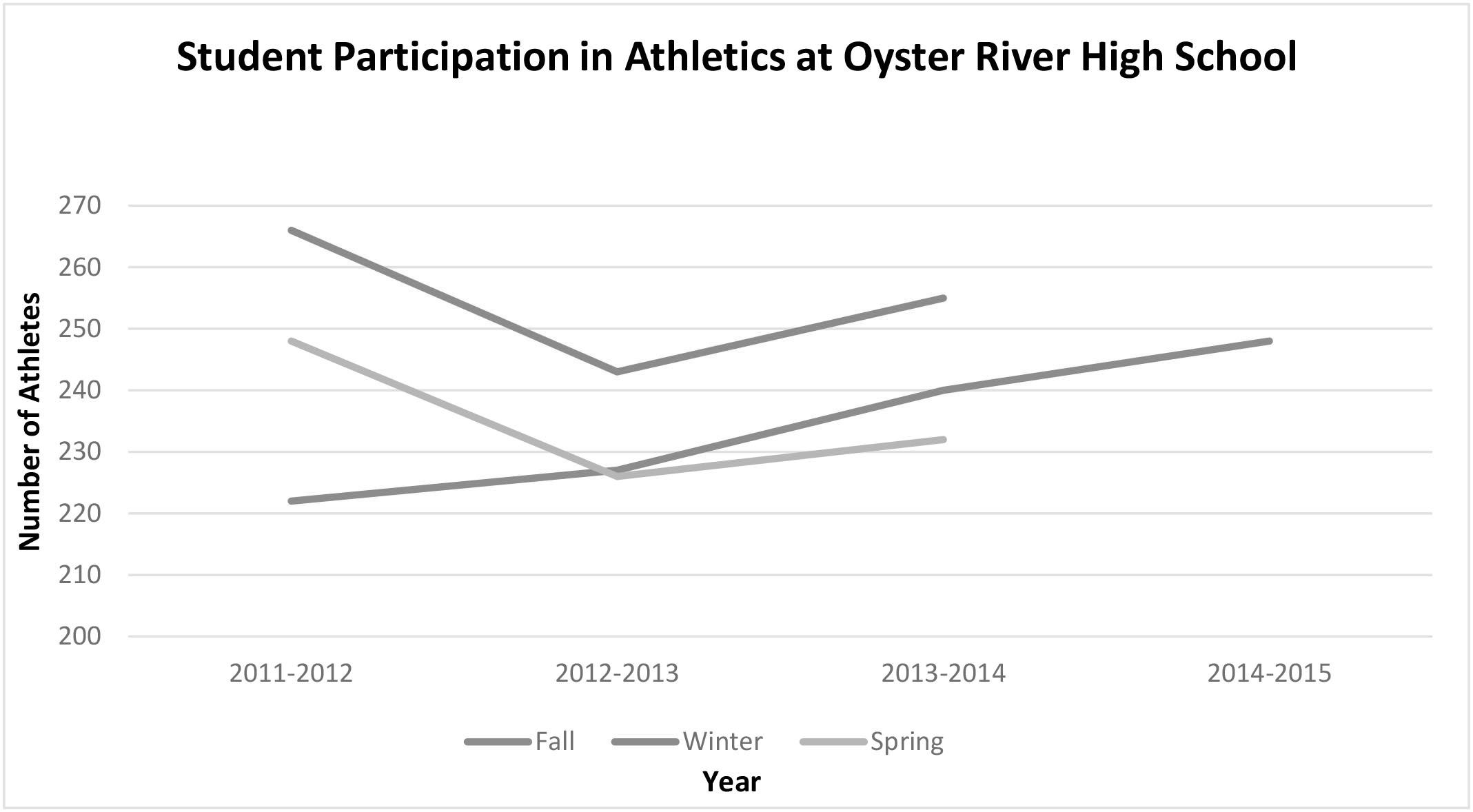
Researchers at Michigan State University determined that students who participated in vigor ous sports did 10% better in
Science, English, Math and Social Studies compared to other students.
“When I have such little time to complete as signments and study for tests, the amount of sleep I can get decreases and that affects my performance in school and on the field the next day, it’s kind of a nev er-ending loop of unfor tunate events,” says senior Maddy Abbott.
When I asked Ath letic Director Corey Parker if he was worried about how he felt students were coping with the high pressures of being a student athlete, he replied saying “Yeah it’s a huge worry. And that’s why we are constantly trying to educate students about making smart decisions on the weekend, eating healthy, drinking enough water etc. Obviously educating that through the coaches and
communication with Mike. Hopefully because you are doing sports and are a stu dent athlete that that carries the responsibility and ac countability over and that you do want to make those better decisions.”
Teenagers should be getting at least nine hours of sleep every night, and according to the sleep foun dation only 15% of teenagers actually receive that. A typical night for honor student and athlete Nick Bergeron means getting home from sports around seven every night and then starting his four hours of homework shortly after. “When I do not have
a lot of homework I usually feel good the next because I get to bed early but any less than like 7 hours of sleep and I’m exhausted the next day,” says Bergeron.
Being a student ath lete is exhausting. The idea that we should sit in school for seven hours, run hard for a two hour practice, and then go home to do four
hours of homework just to get a pathetic seven hours of sleep is tiring to even think about.
Abbott takes the winter off from sports and from what she has noticed during that off season is that she is get ting more sleep, her grades are better and she becomes more sociable during that time.
“Its hard being a student athlete. Its hard to go to high school now a days with the pressures of life. I want the sport part of it to be the release, to be the enjoyable piece of it so that when you are doing two hours of prac tice you cannot worry about science or math. But again that’s handled differently by everyone. The big thing is to communicate with your coach, myself, your counsel ors and teachers
and really
“Its hard being a student athlete. Its hard to go to high school now a days with the pressures of life. I want the sport part of it to be the release” - Corey Parker
29 SPORTS & CLUBS
(having report that were all in this together,” says Park er.
“I think especially at Oyster River, we feel like we have to push ourselves to bal ance as much as possible, that’s just how it is. I think that teacher’s could be more lenient about dead lines of assignments so student-athletes don’t have to lose sleep and, in some cases, metal stability to finishing a paper that could be more well-written with an extra day or two to write it,” com ments Abbot.
So is this constant cycle of exhaustion really worth it? Alum Hannah Igoe says “Being a student athlete is completely worth it, there is
no better way to spend your time in high school. It was hard but it was worth it.”
“Being a successful student athlete definitely comes down to time management skills which is a great skill for life. Having that incen tive of playing a sport I
I know there are some days where you cannot even stomach the idea of going to practice because you are so tired, or you just want to blow off all your studying. But being a student athlete not only gives you an amaz ing opportunity to play a sport you love or be on a team but in the end being a student athlete will teach you many useful skills for life.
think motivates students and that regiment of going home and doing homework is a good tool for life after school, having something additional in your life other than school is really a great lesson to learn.” says Park er.
“I look back at high school and miss my team sports 100% the most out of anything. Never take them for granted, the memories you have with your team you will look back on,” says fellow alum Molly Mc Quade.
Isabelle Todd Guest Sports Writer
(STADIUM BOUND, cont.) some word out. Another plus is being on the UNH campus, where most of our graduated students attend. It allows them to come to big games and bring their friends since they’re walk ing distance from the fields. Games like these can also have a financial benefits for the school and teams. The concession stand would boom with profits, more people attending games means more possible cus tomers which really helps out the sport that is play ing. You know thoes prac
tice uniforms that your team has been dying for?
Yep, you’ve got it. With the profits from the stands teams would be able to get that new gear needed, and anything else that they had in mind that they believe would help their season. However there can also be cons to doing something big like this with our ath letics.
“I feel like things would get a lot more rowdy in a stadium setting,” senior Amira said when asked about the stadium setting and a bigger fan base. Park
er also agreed with Amira, adding “we would have to monitor fans a lot more, but I feel like with more outside people, like parents and alumni, students will behave better.” A student at the Winnacunnet foot ball game explained that it worked almost to a tee to what Parker had men tioned. “ It’s rowdy, but not aggressive. We’re appropri ate because we know that others are watching.”
I guess we’ll just have to see how things go if we get our stadium setting! Until then, everyone should help
out our athletics and try to bump up the fan bases.
Kirsten Weiker Sports Writer


“Being a student athlete is completely worth it.”
-Hannah Igoe
30 SPORTS & CLUBS
Spirit Day
How the Past Affects the Present and Future
“Some kids were running around with their faces completely covered so they were unrecognizable and slapping you in the face with paint, or pinning you down while you got paint poured all over you, or be ing paddled,” said Oyster River class of 2012 alumni Conor Mc Namara, as he describes what spirit day was like his freshman year at the high school. Spirit day (also known as Class Col or Day) has gotten strict er at ORHS since the days of paint tagging, tar geting under classmen, and face cov ering. Ad ministration emphasized the rules and guidelines to diminish the intimidating environment that few upper classmen were creating.
“All school rules obviously apply during spirit day. We took away noisemakers be cause kids tend to use them during class time which causes disruption. And kids can’t be covering their faces because we need to know who are students are in
case of an emergency,” said school principal Todd Allen “All the chaos of spirit day happened before cameras were installed in the school, so it was much easier for kids to get away with tag ging and paddling,” said McNamara. “ I don’t think administration really knew
“All the seniors charged through the hallway and started tearing through the school, shoving kids, and ripping down class signs.
I don’t remember being so angry at the students,” said art teacher Tim Lawrence.
“It was more than bullying, in fact it was beyond bully
by the seniors after the pep rally,” said Social Studies teacher Derek Cangello. “It just got out too of control,” he added.
Senior, Trevor “T-Chill” Chilcott said that he under stands why administration cracked down on the rules of spirit day.
“One word that comes to mind when I think of spirit day is row dy,” said Chil cott.
Competitive events on spirit day can be ex citing but it can sometimes lead kids to go over the top with neg ative rivalry be tween grades.
what was going on behind their backs, but the follow ing year they made rules like: no covering your face, no paint, and no noisemak ers,” he added .
When interviewing teach ers about what occurrences made spirit day stricter, the first thing they mentioned was the senior bull run of 2009, which happened after the school pep rally in the gym.

ing. It should be called the bully-run,” added Law rence.
“The roughest I’ve seen spirit day was when the freshman got bull rushed
“Healthy compe tition is always great on spirit day but when things get phys ical that’s when it becomes an issue,” said Mike McCann, the Assistant Principal.
31 SPORTS & CLUBS
““All the chaos of Spirit Day happened before cameras were installed in the school, so it was much easier for kids to get away with tagging and paddling,” -McNamara.
“My goal for spirit day is for everyone to be safe and have fun, but I don’t want compe tition causing disputes,” said Allen.

Kirk Marshall, who has been doing maintenance at the high school for seven years said spirit day has gotten
ally loaded with paint. Kids would spill nail polish all over the floor which would
in the bathrooms, but over all I’d say its been much better over the last few years,” said
want Spirit Day to be adver sarial, but if things like this are going to happen then there’s issue that needs to be resolved.“
adversarial, but if things like this are going to happen then there’s issue that needs to be resolved.”
Marshall
“I definitely agree that paint shouldn’t be allowed in the school. It’s not the janitorsre sponsibly to clean up paint that some inconsiderate jerk spilt,” said Chilcott.
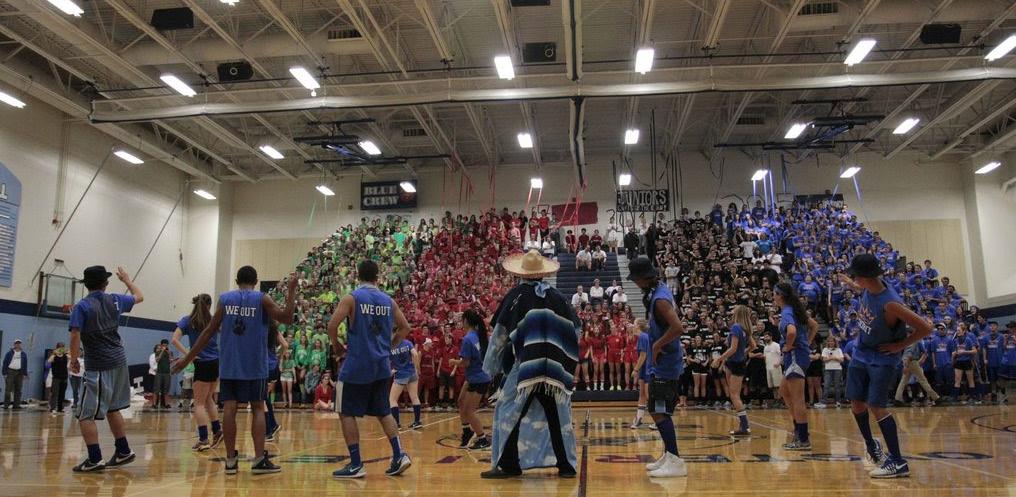
Due to the events that happened this year’s spirit day, administration has not yet decided what the plans will be for the following years.
“I’m baffled by the logic of some of
be
much cleaner over the past few years.
“Bathroom sinks were usu
pull the wax right off of the tiles,” said Marshall “There would sometimes be graffiti
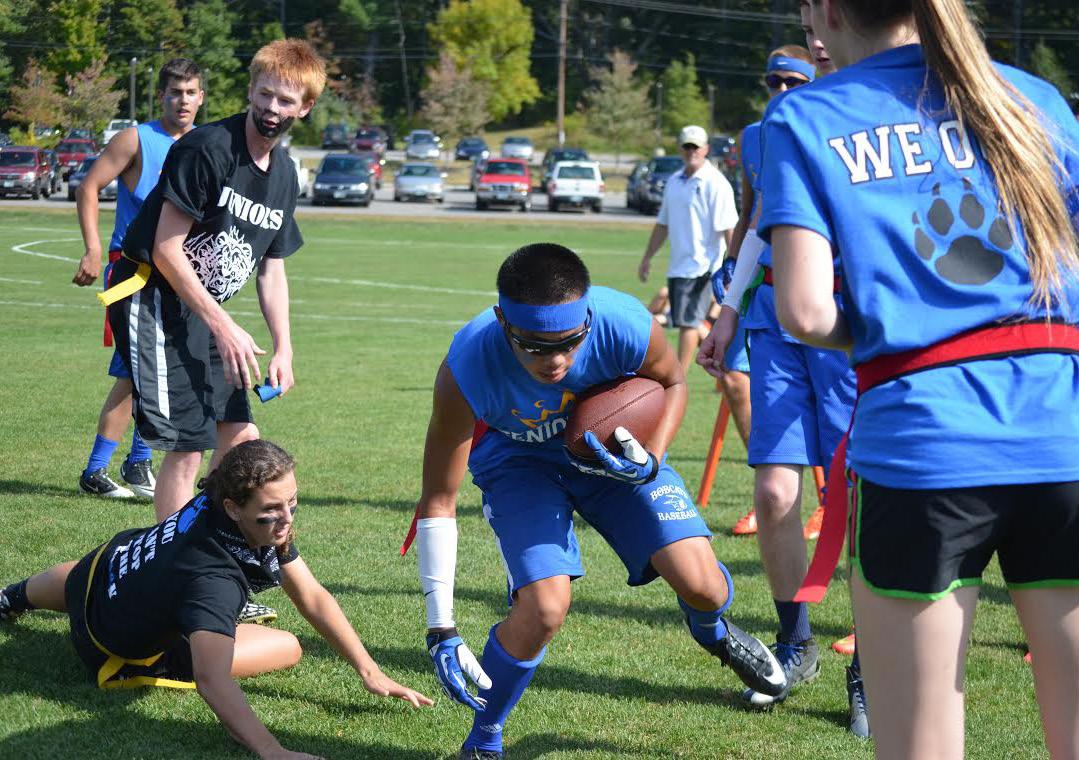
said Allen “I don’t
Jake Garner Guest Sports Writer
Juniors vs seniors in flag football. Photo credit: Arun Falk
these students who thought it would
a good idea to smuggle drugs and alcohol into a school,”
Seniors partaking in the dance competition during the pep rally. Photo Credit: Conrad Dundorf
32
& CLUBS
“Healthy competition is always great on spirit day but when things get physical that’s when it becomes an issue,” -Mike McCann
SPORTS

























 Moore News Writer
Moore News Writer




















 Forrest Spinney Guest Features Writer
Forrest Spinney Guest Features Writer
 Nathaniel Ruhlman, Creative Director at Dorian Orange
Nathaniel Ruhlman, Creative Director at Dorian Orange
















